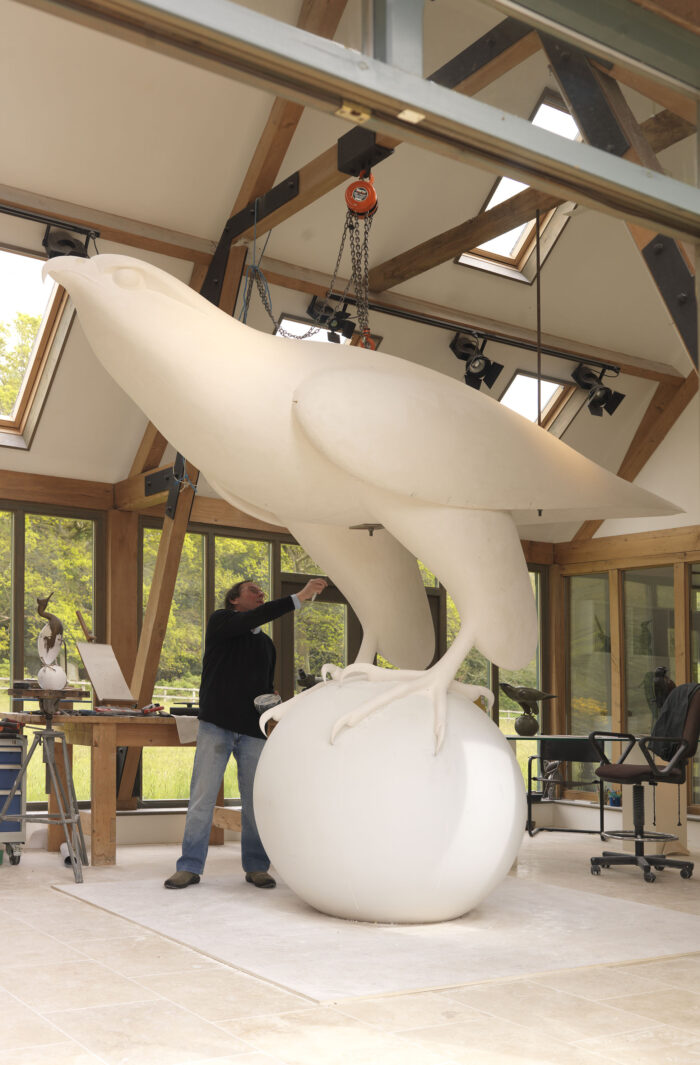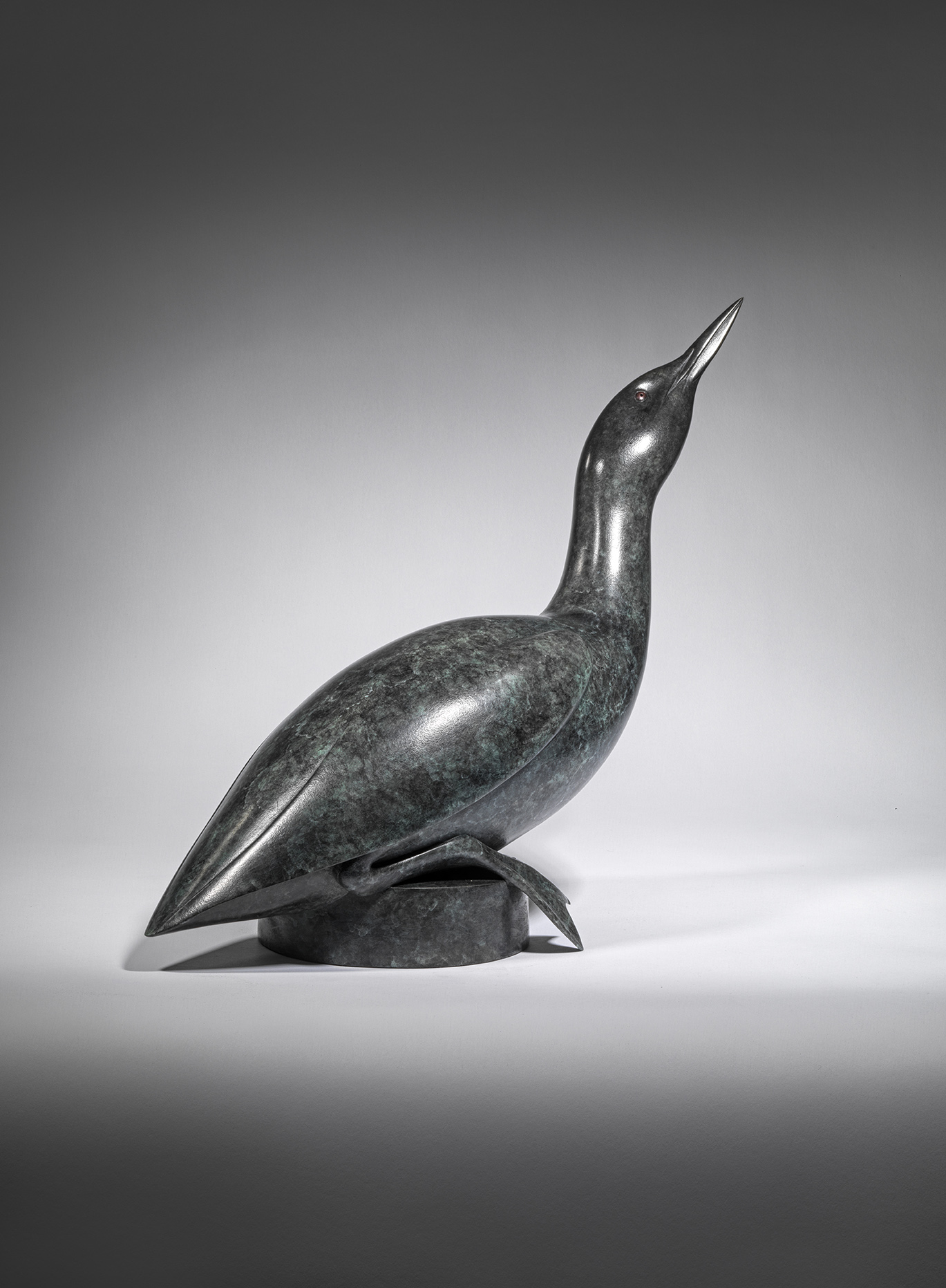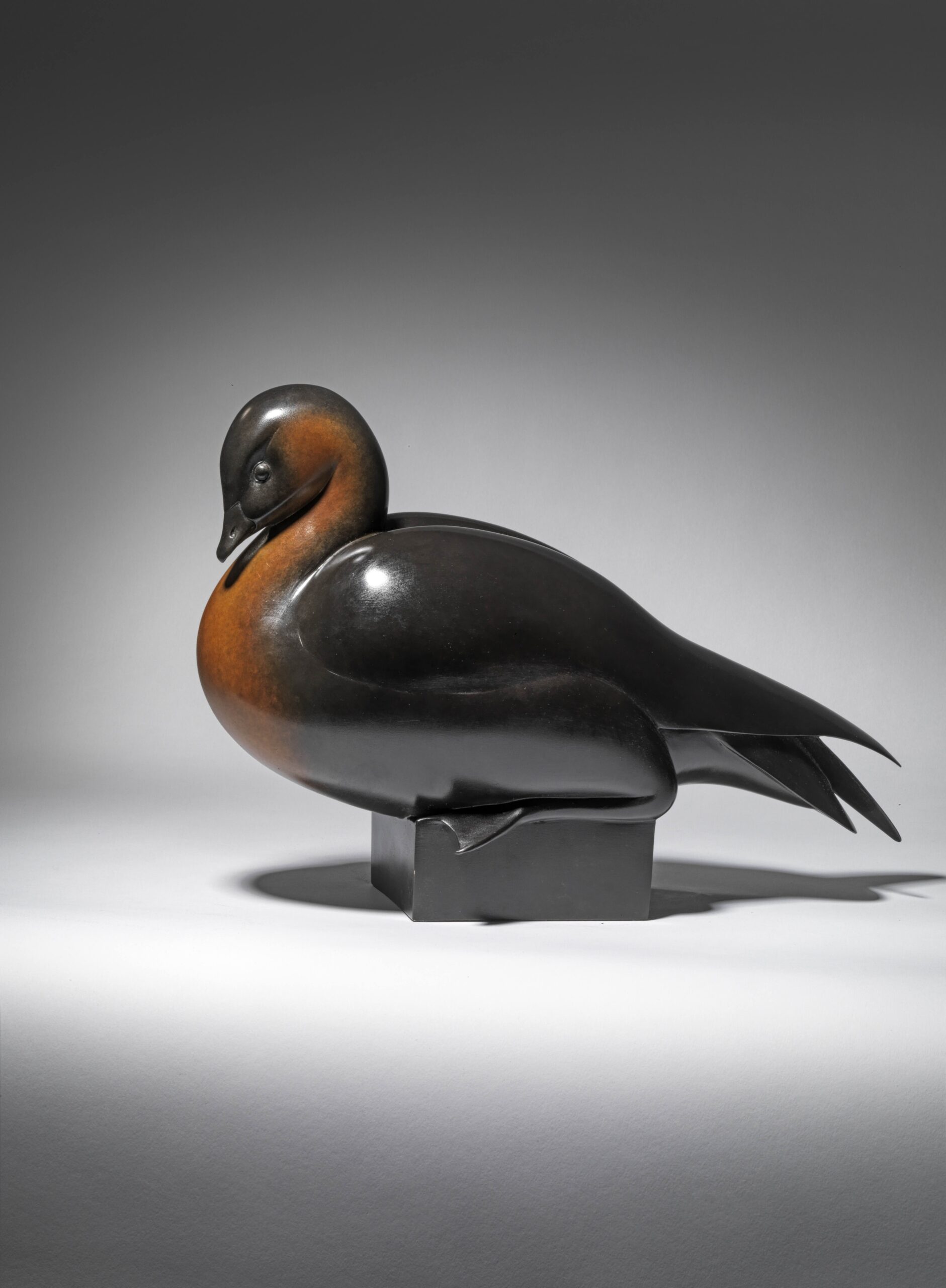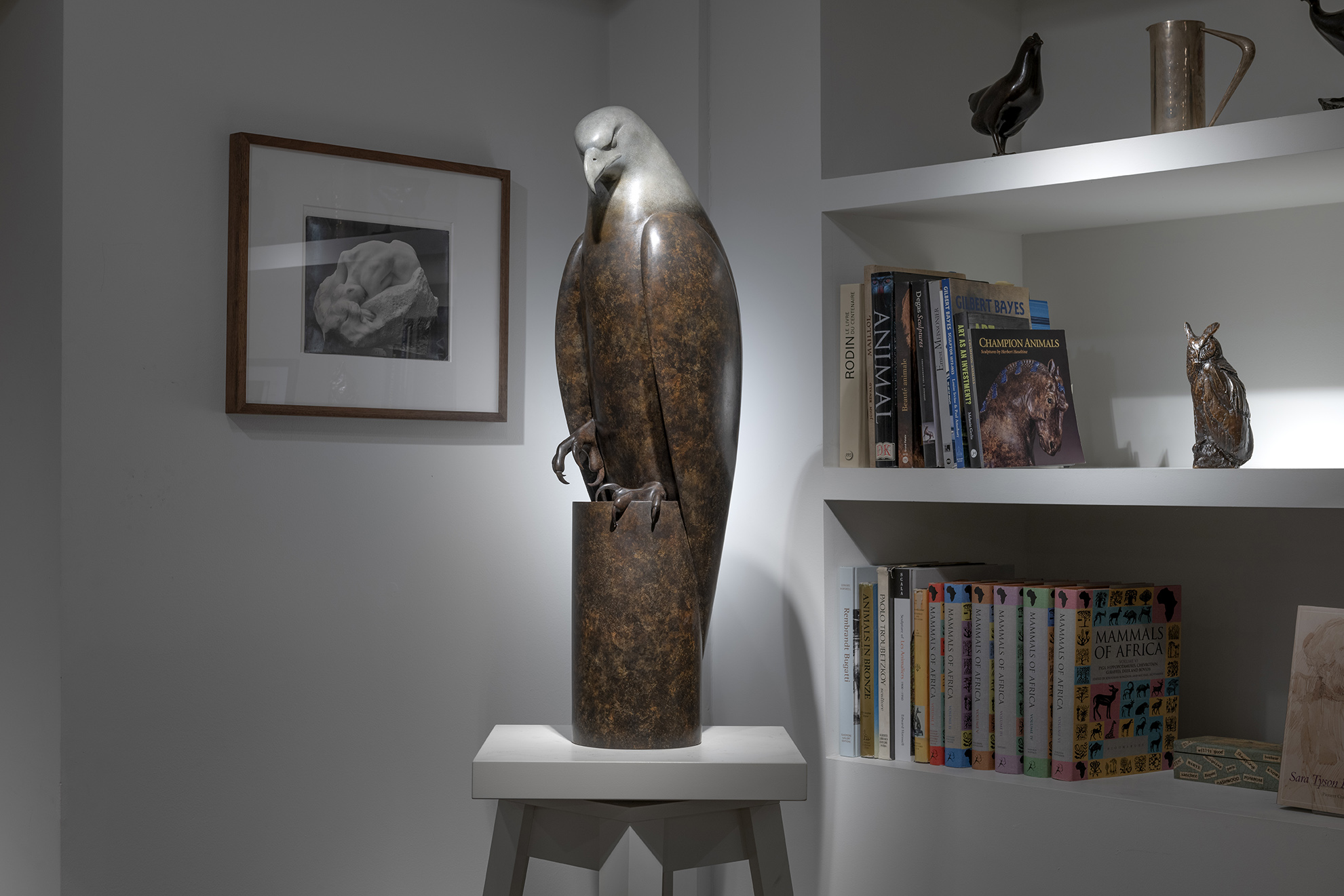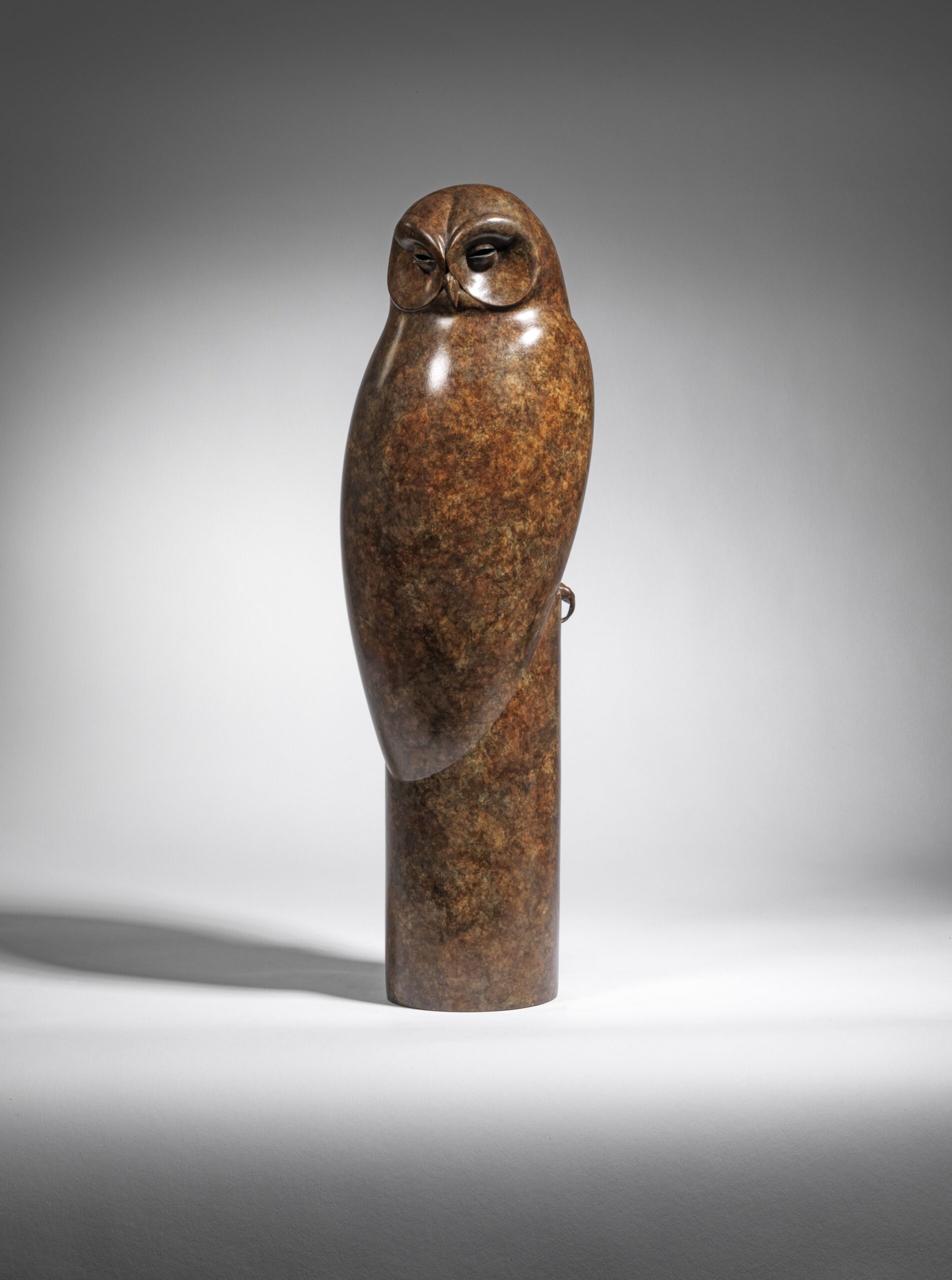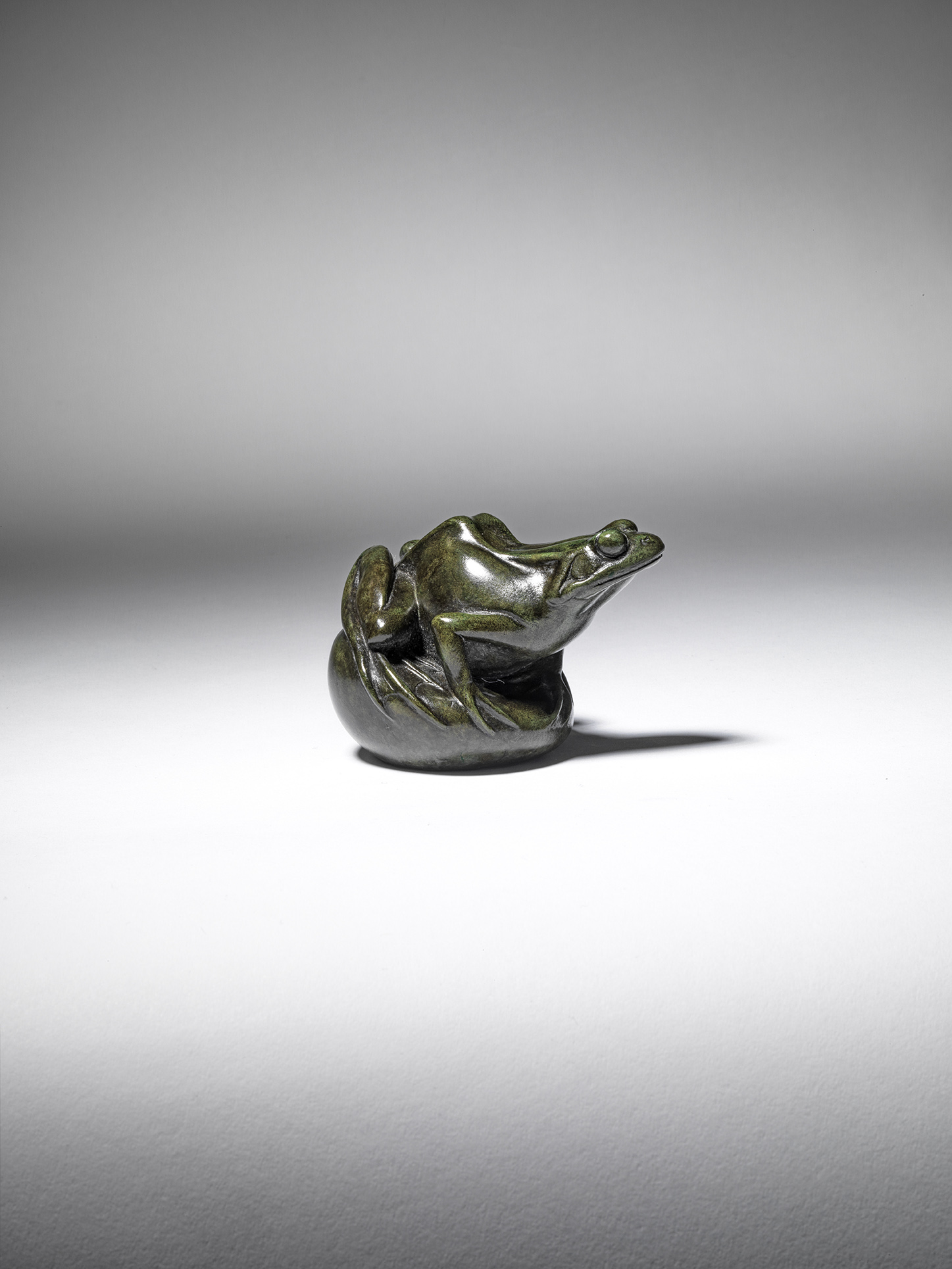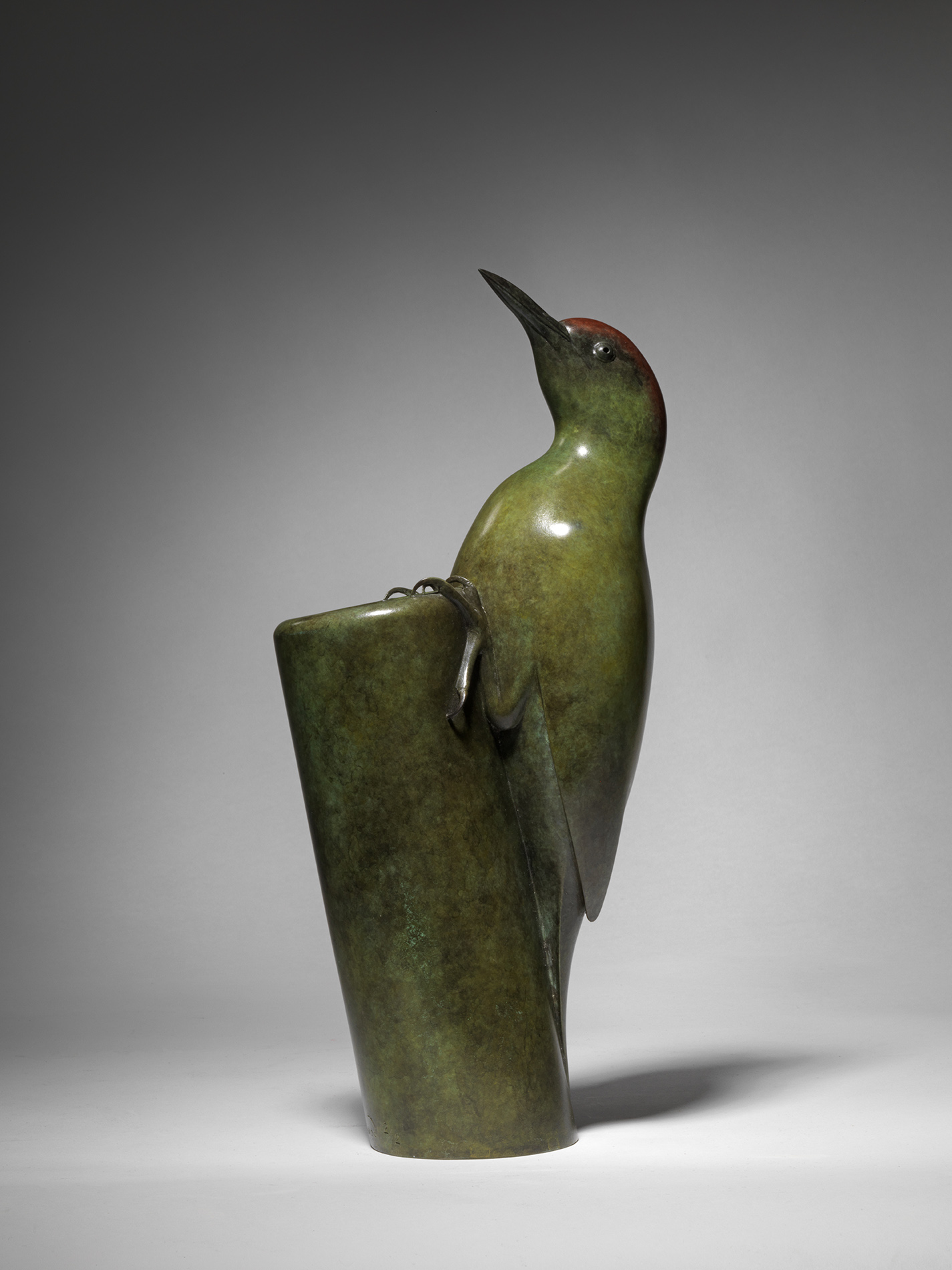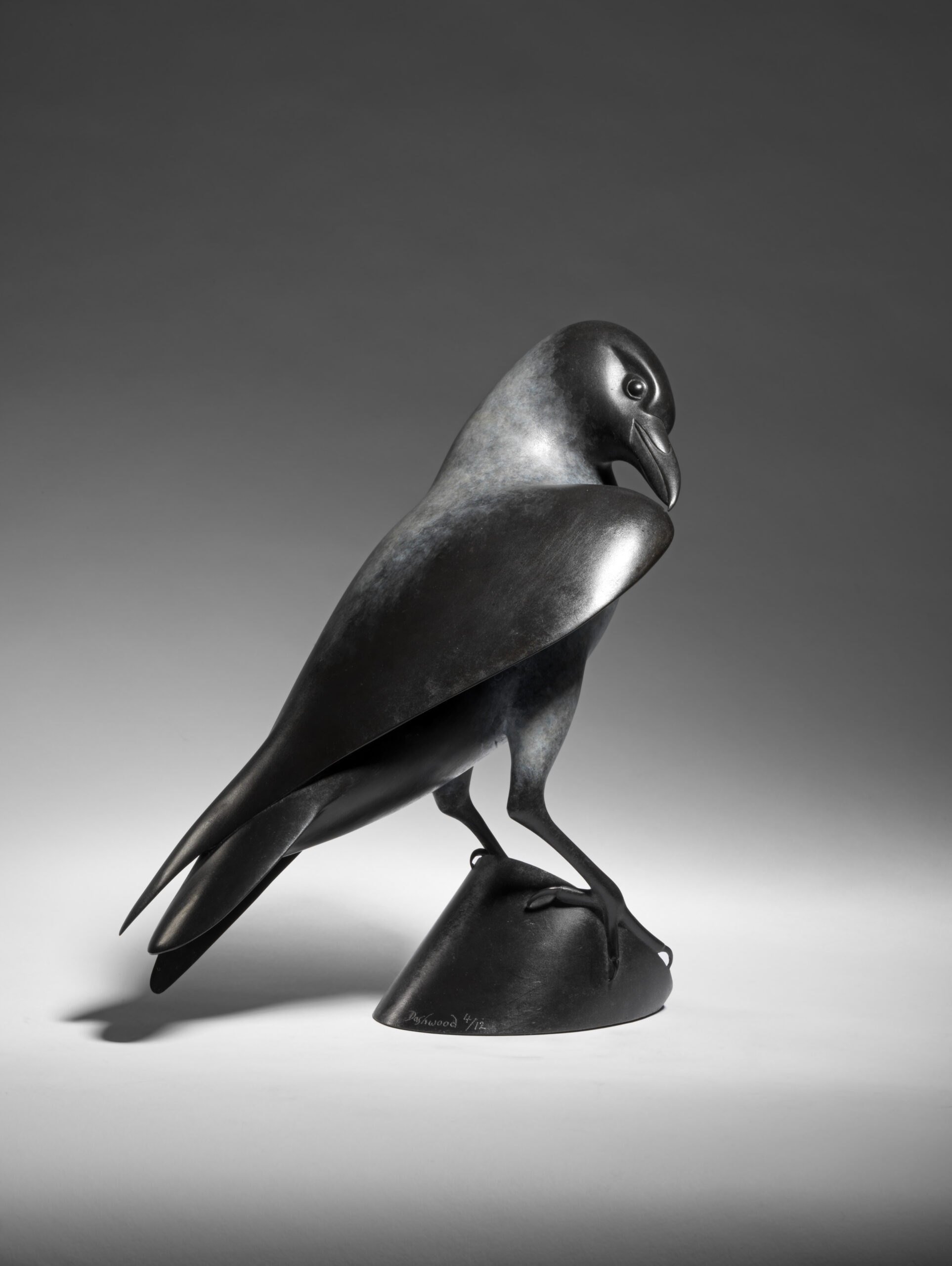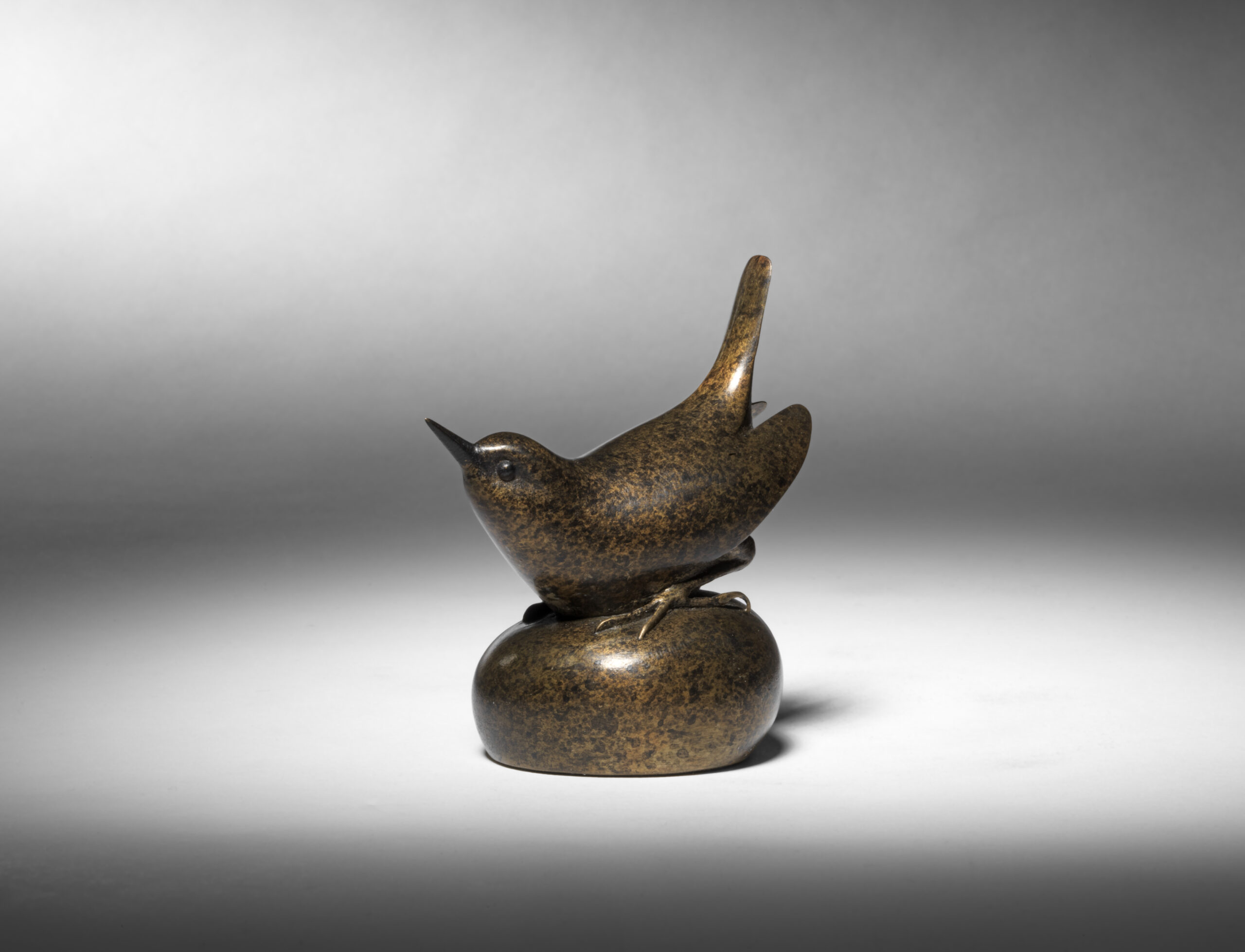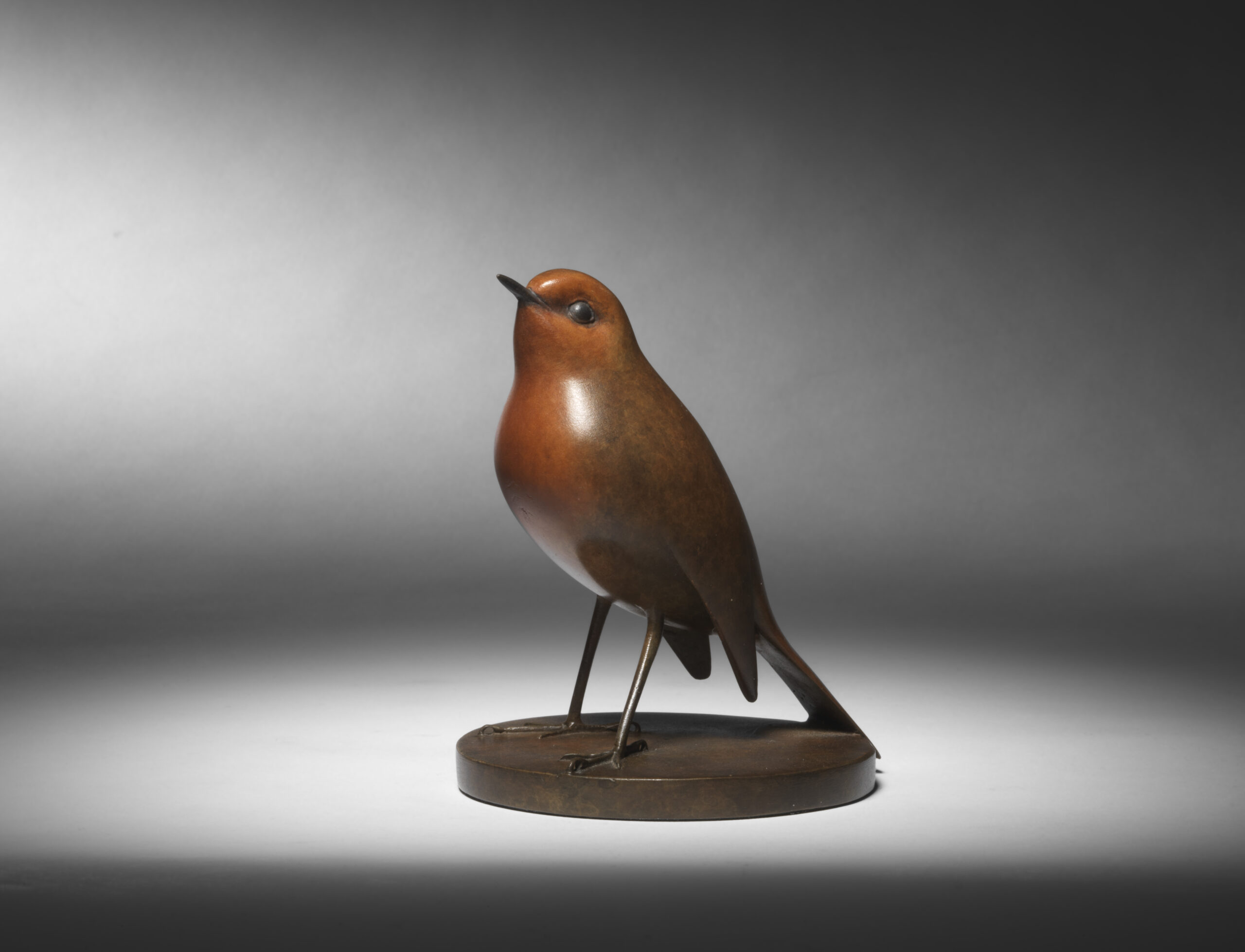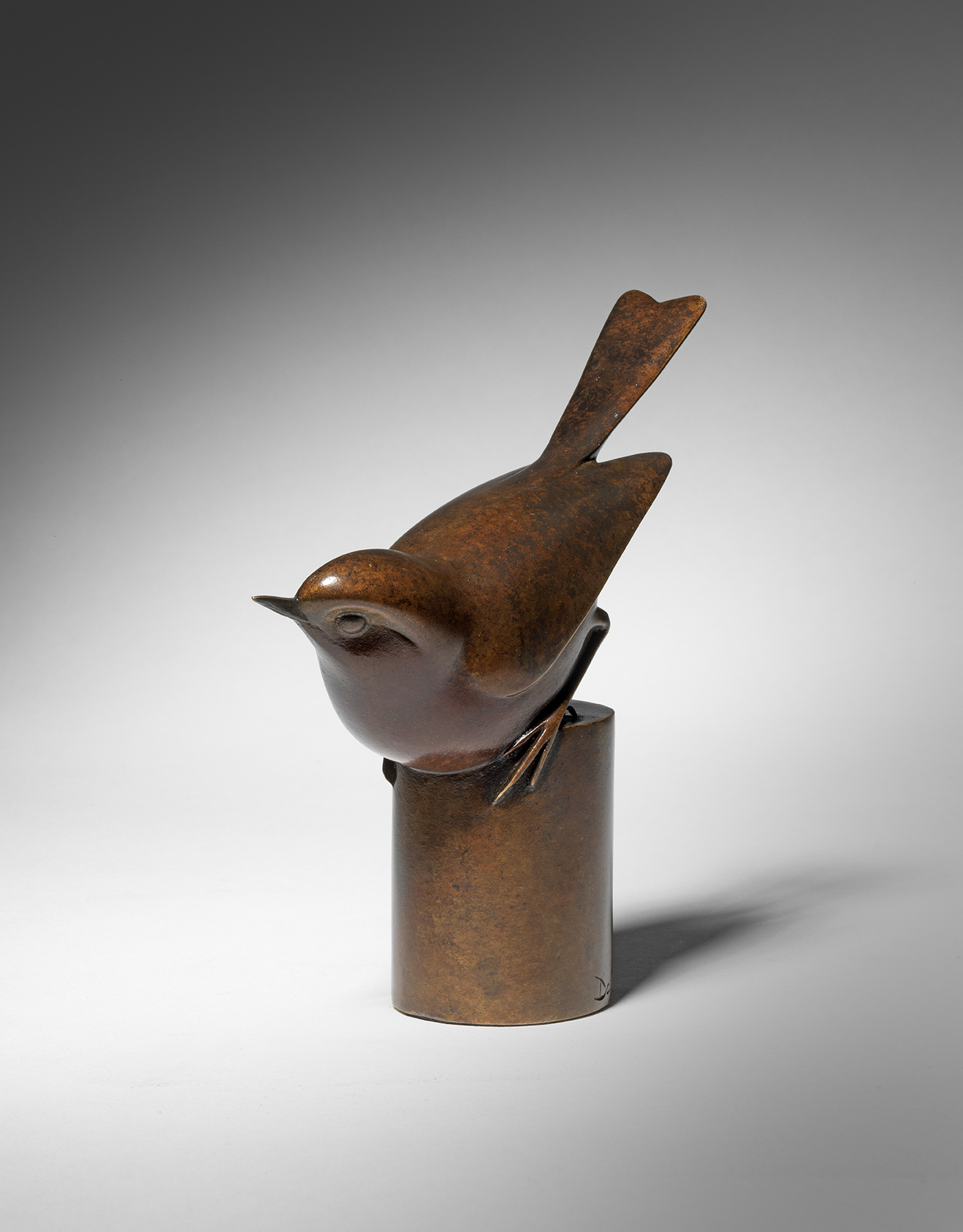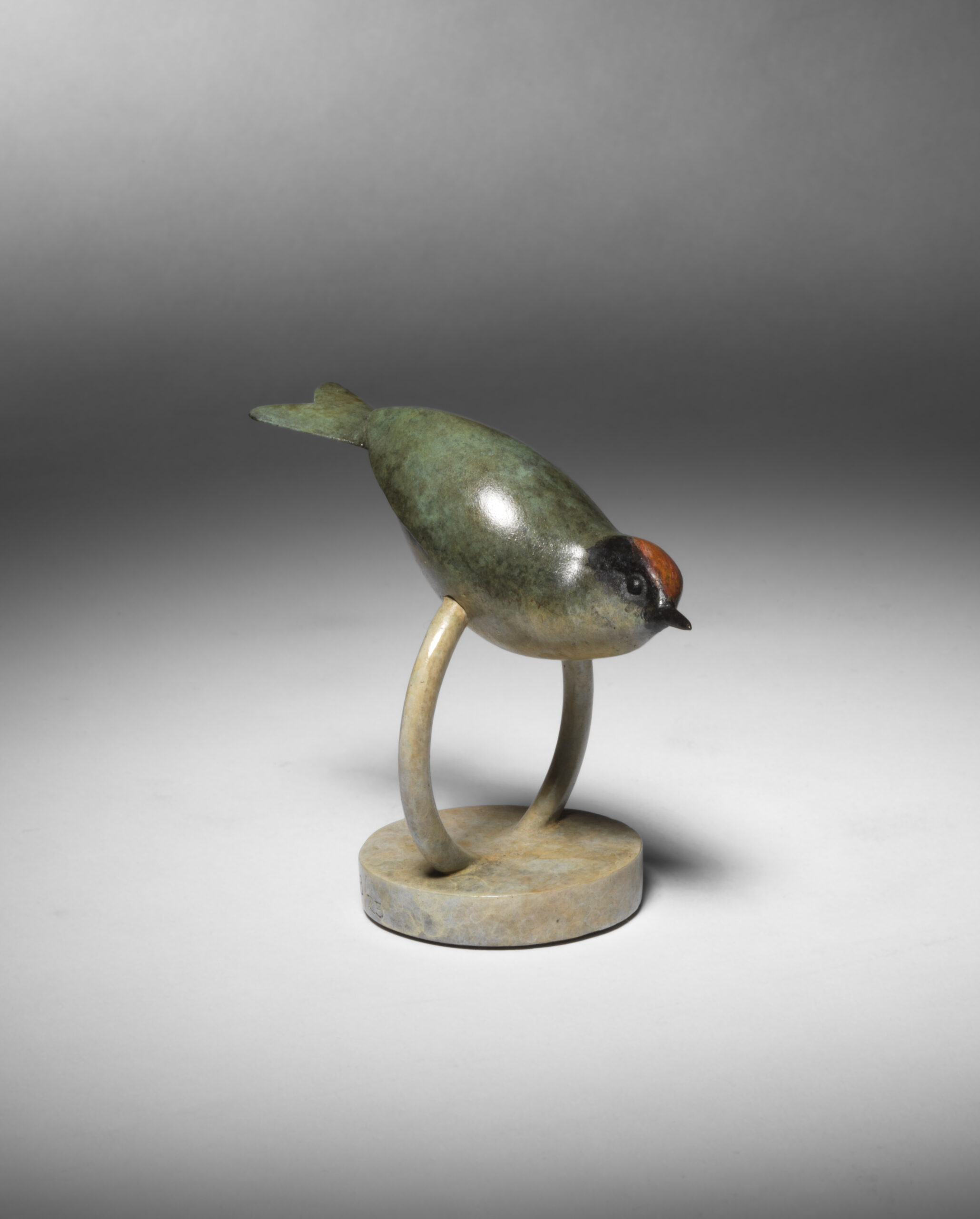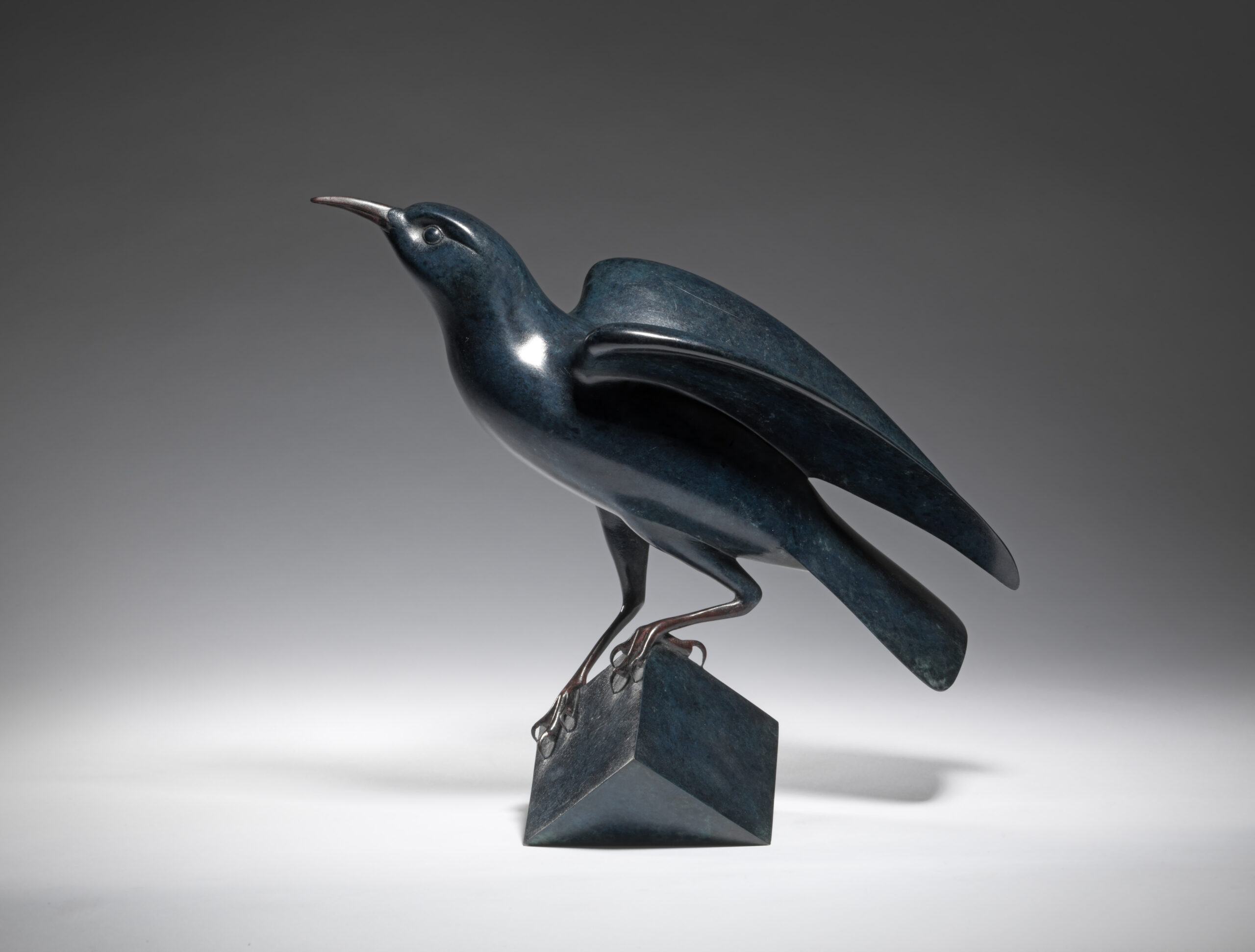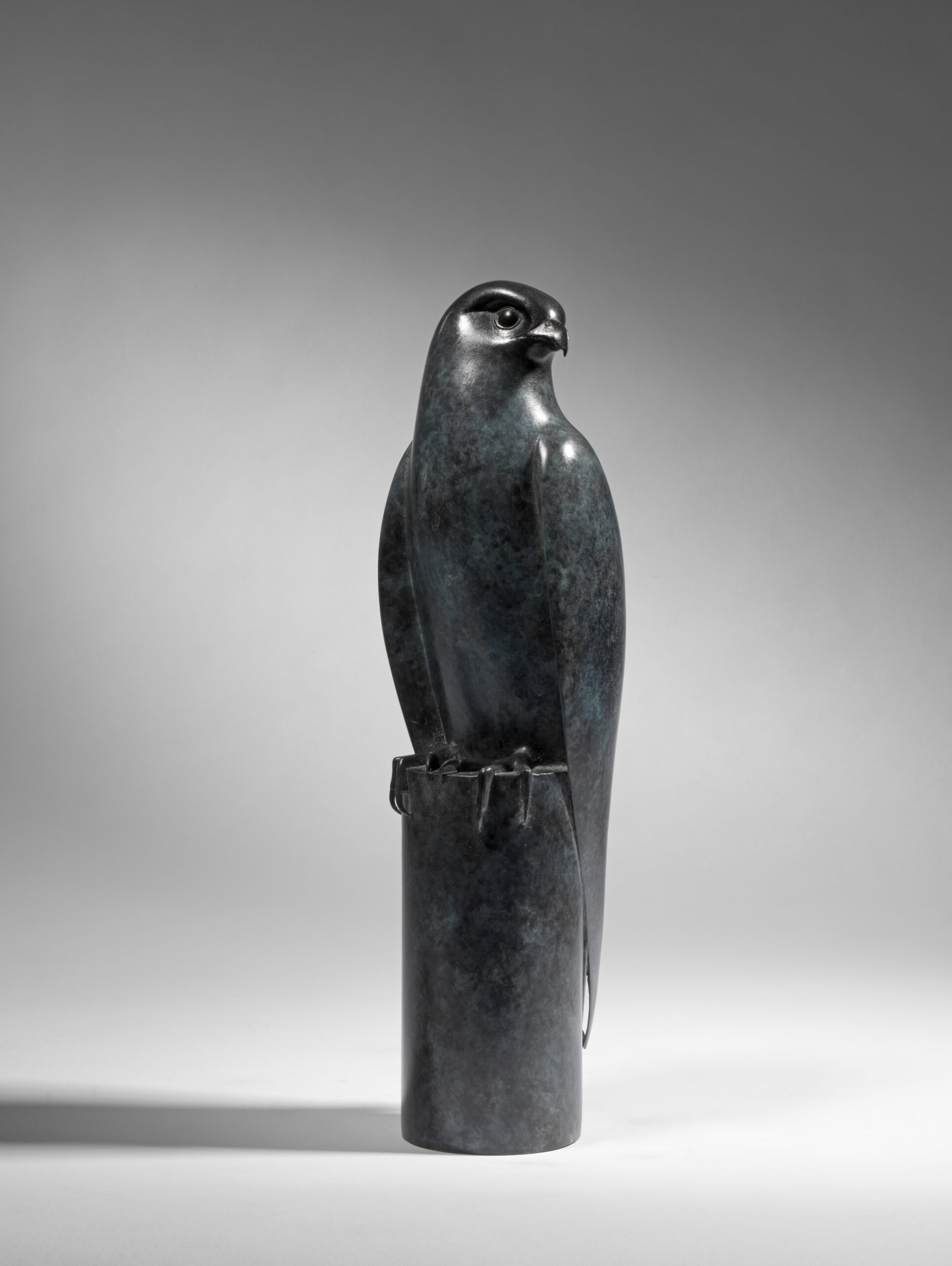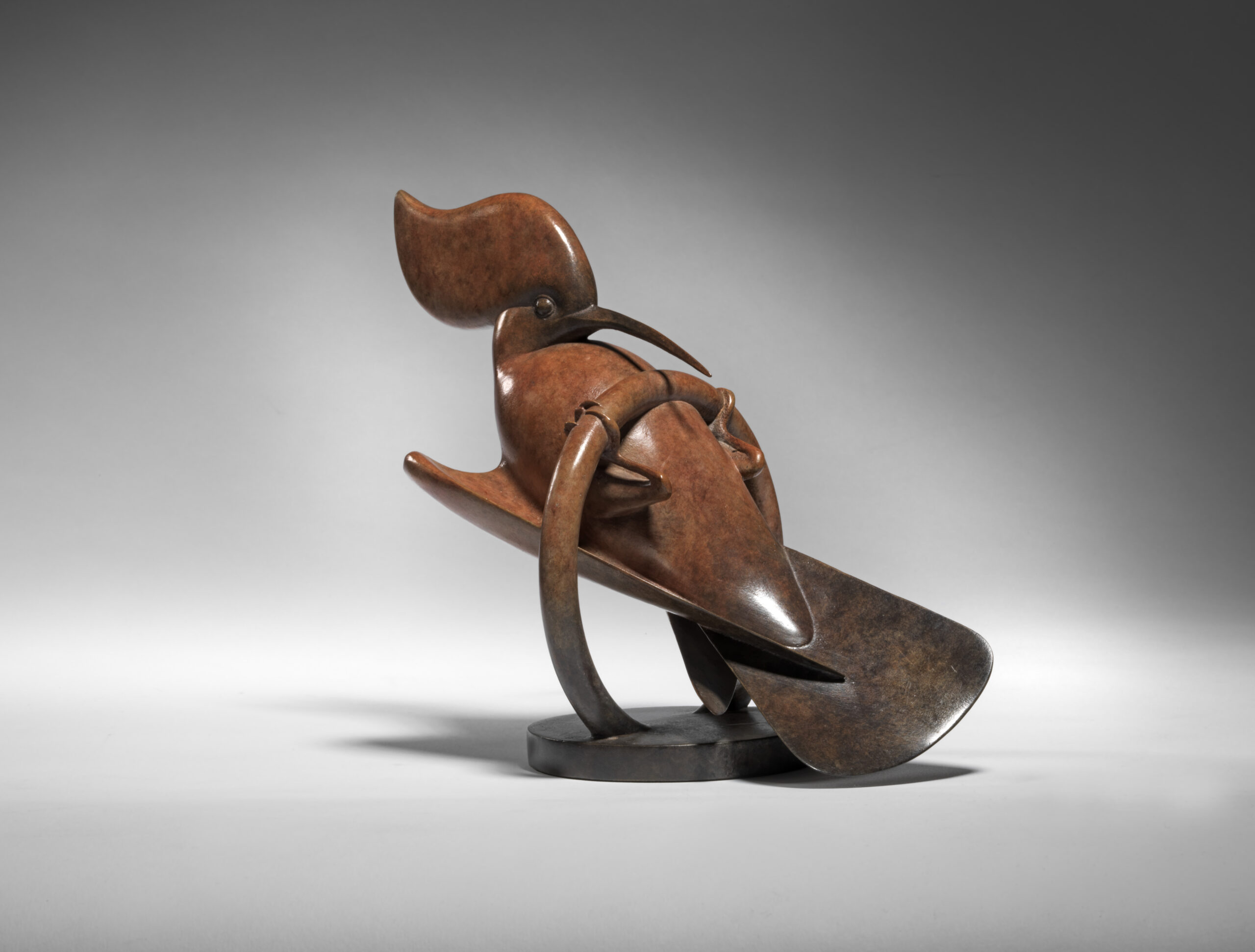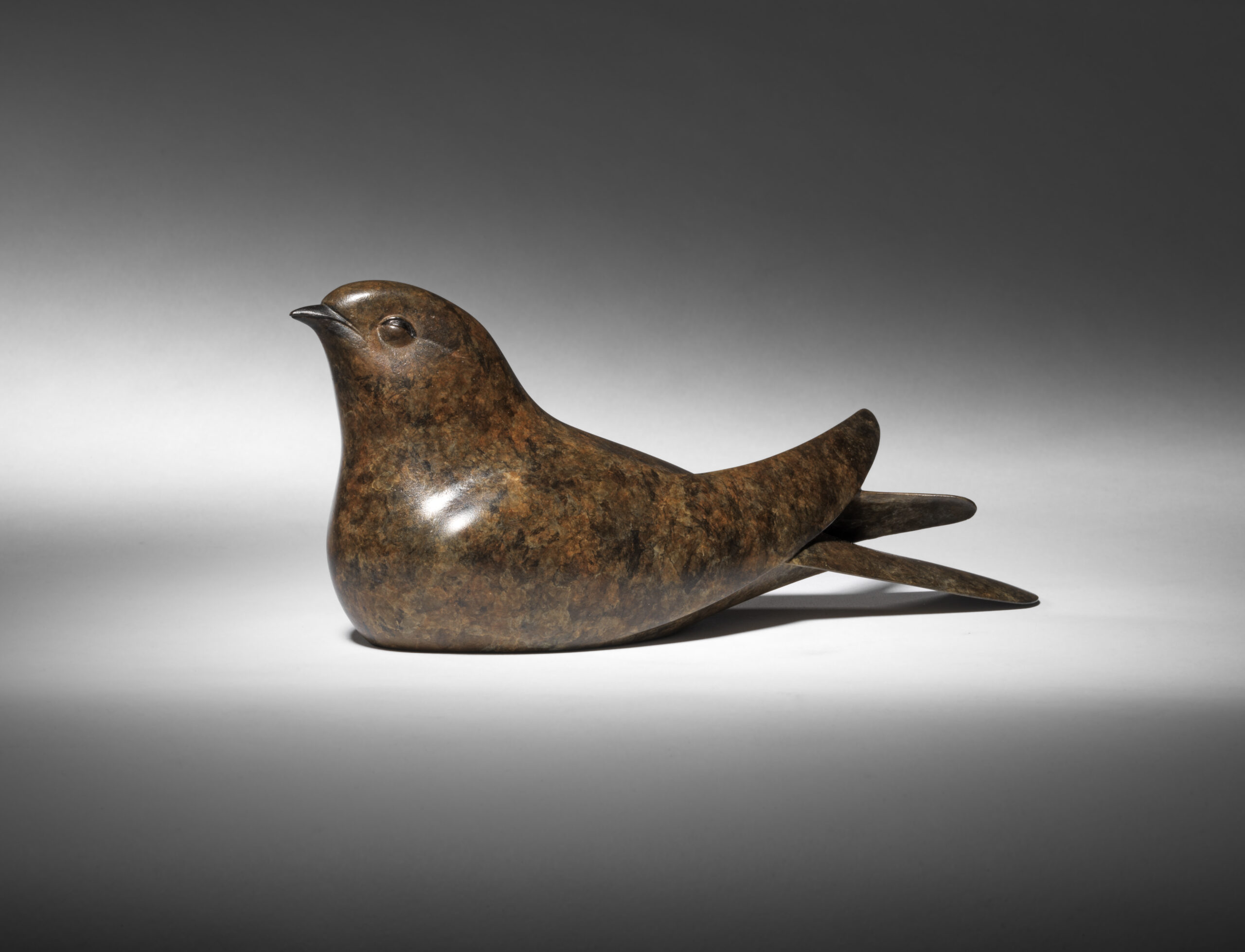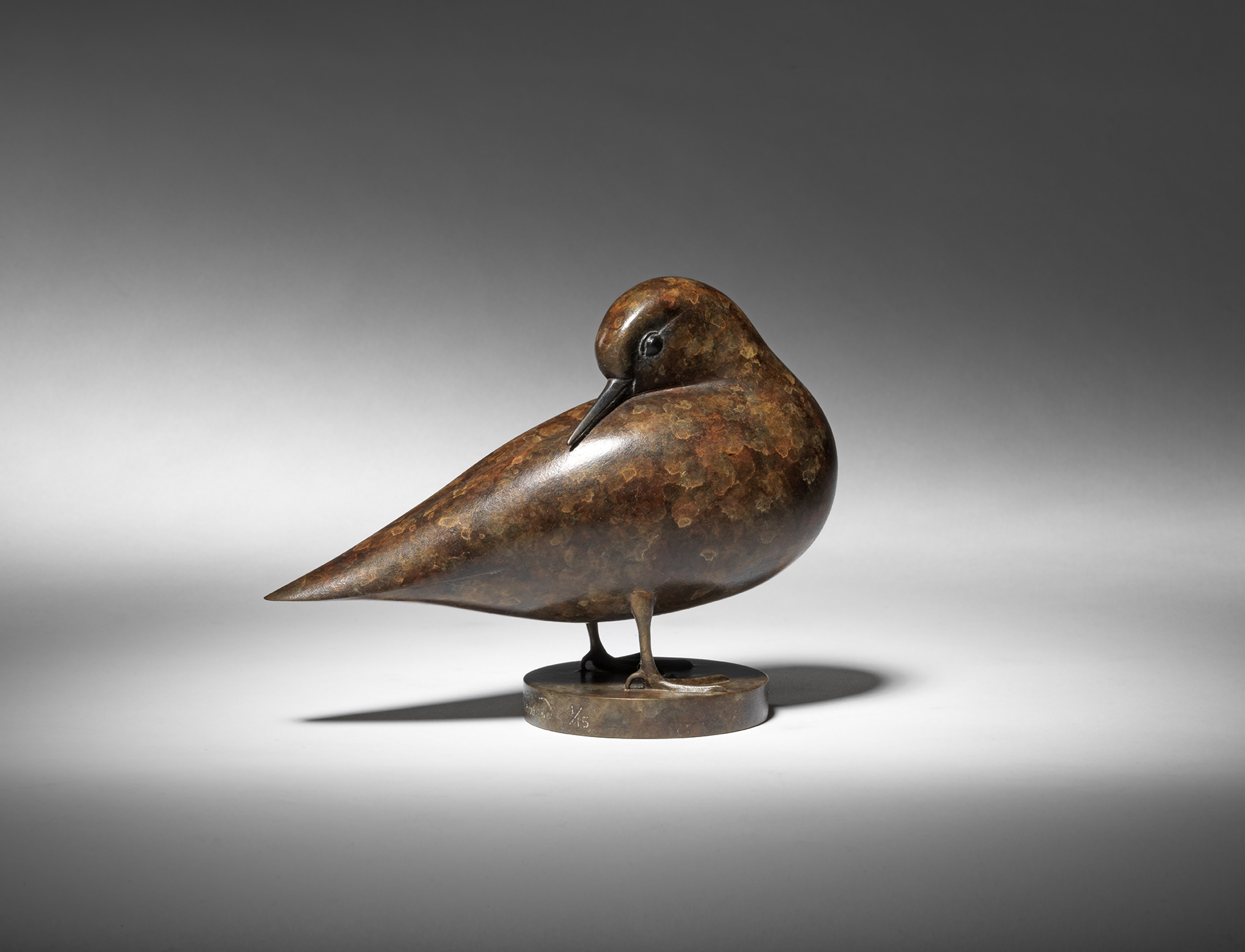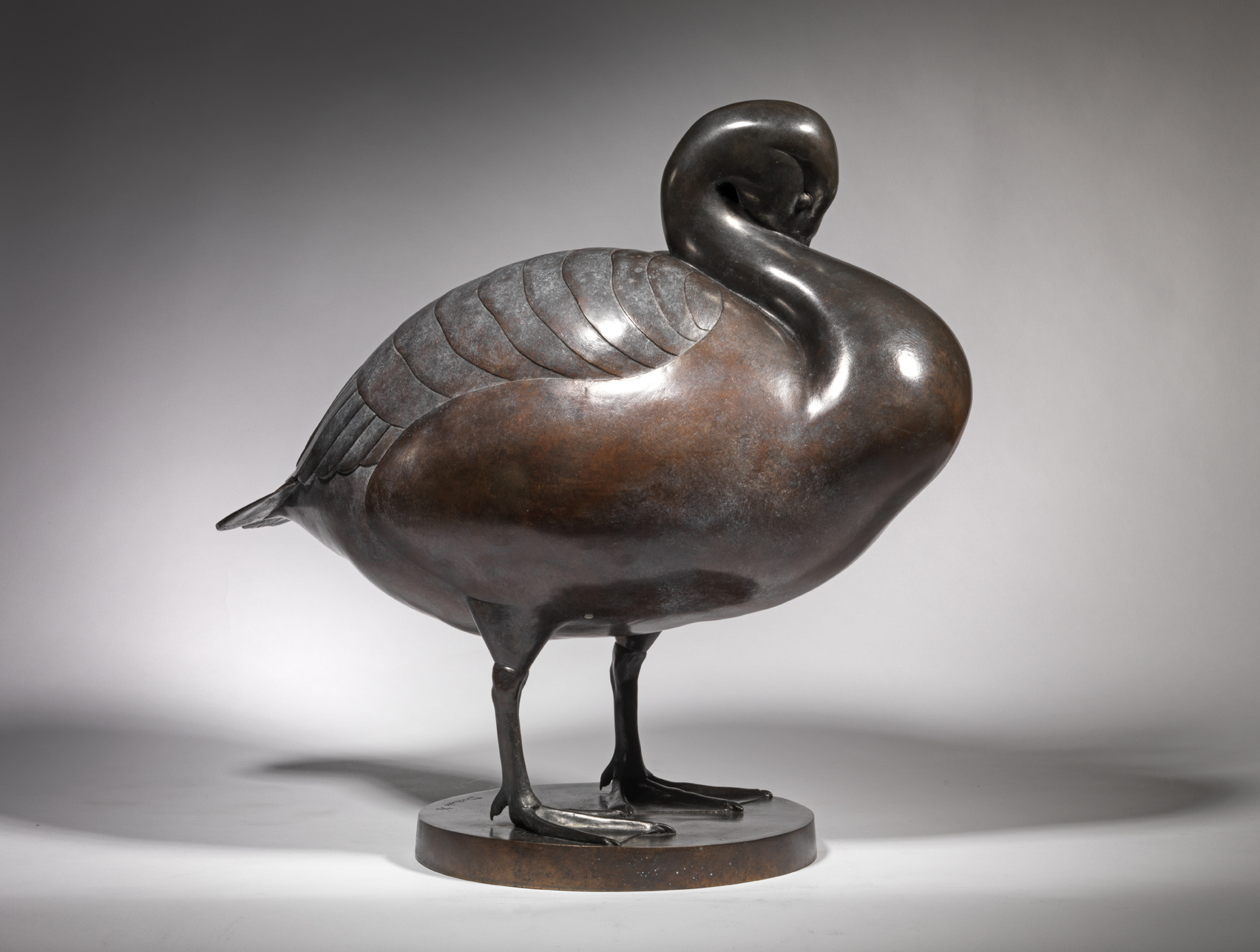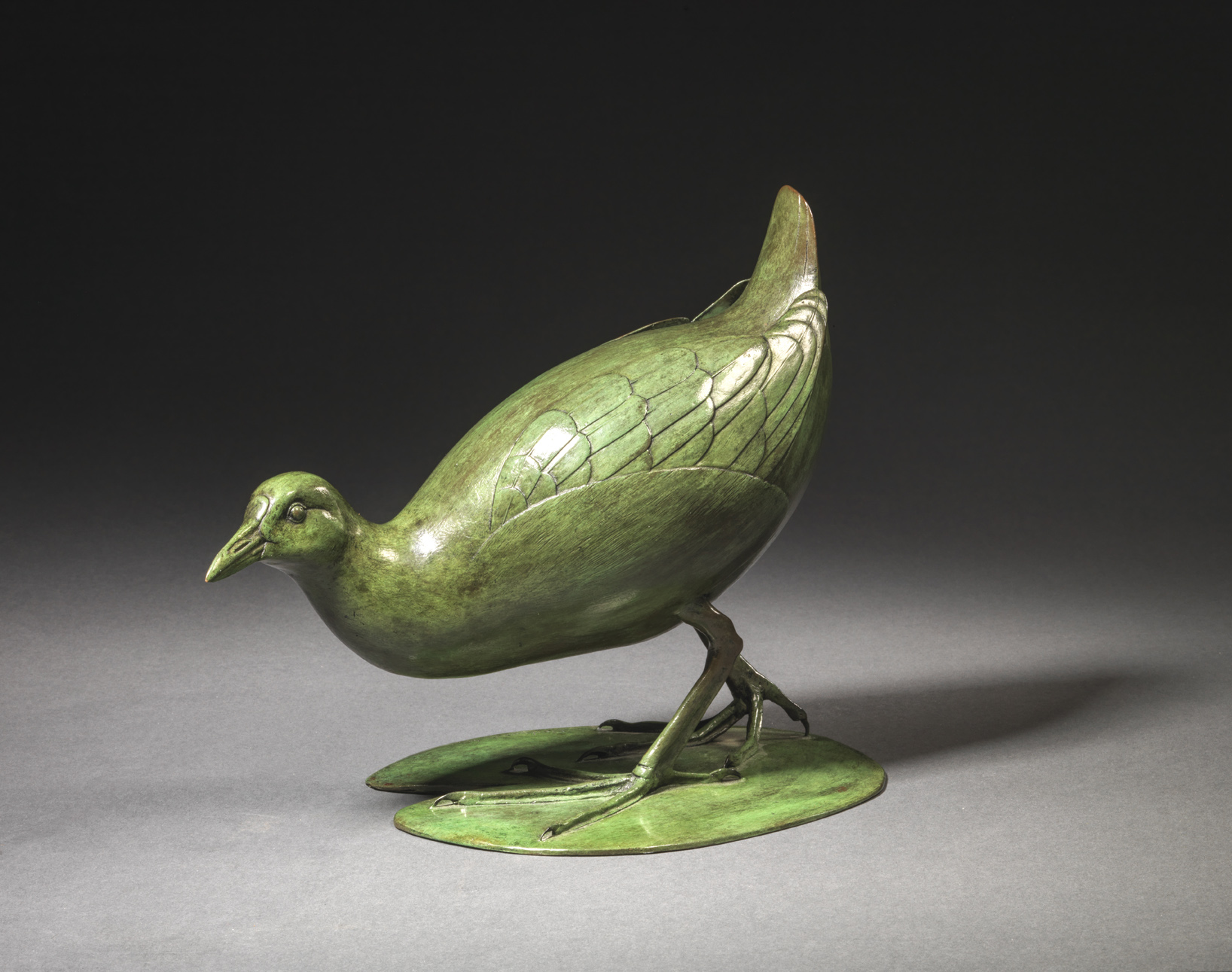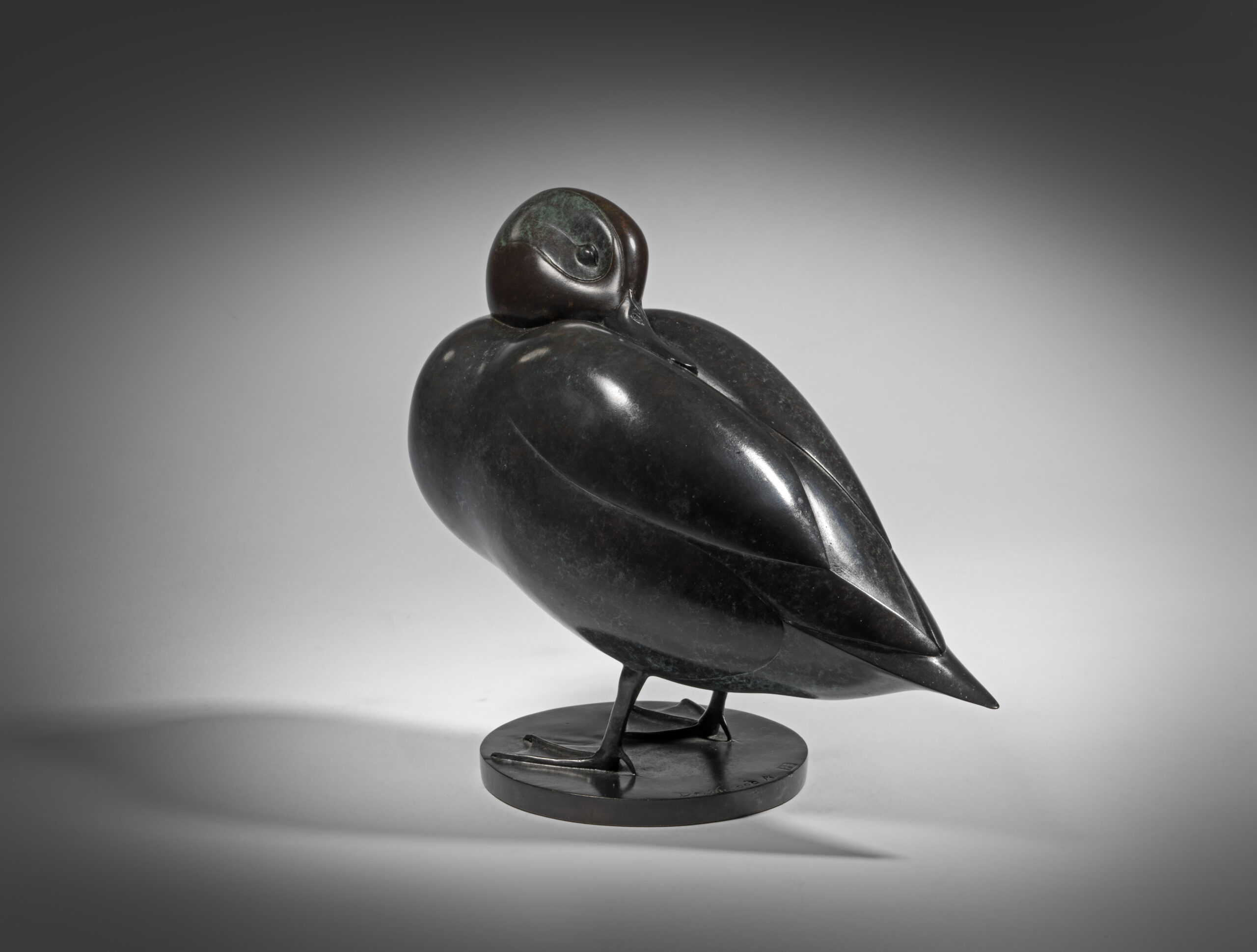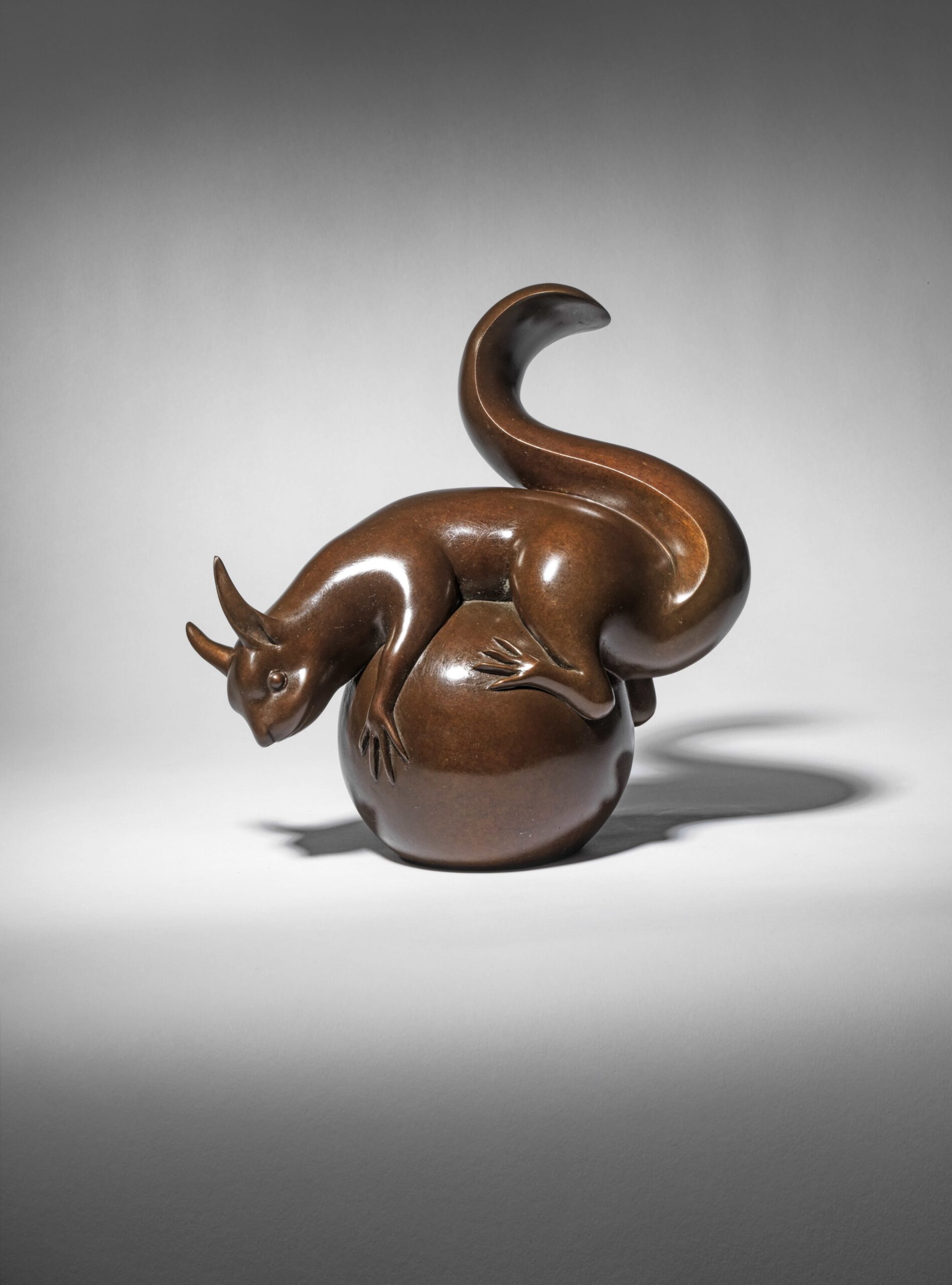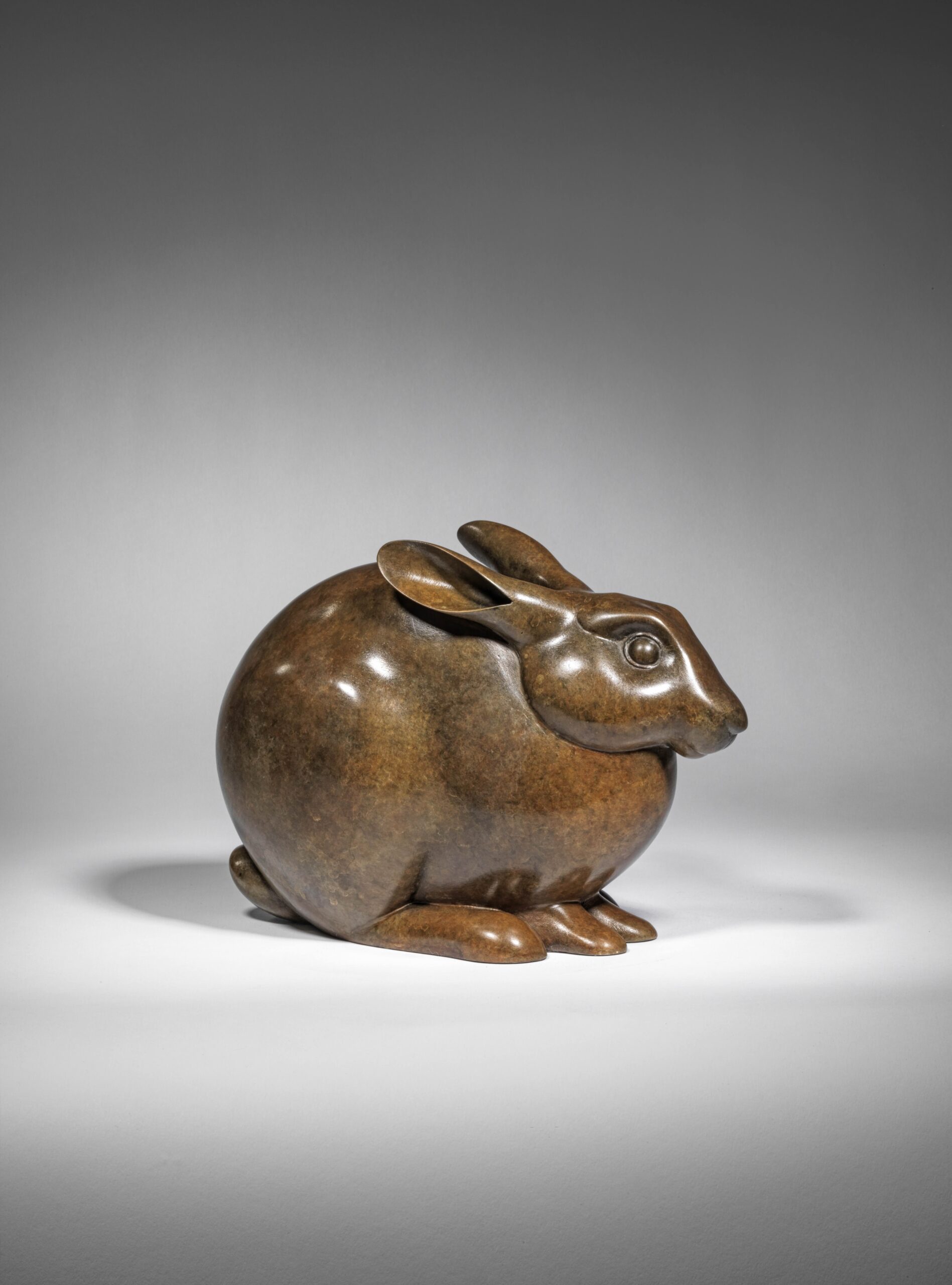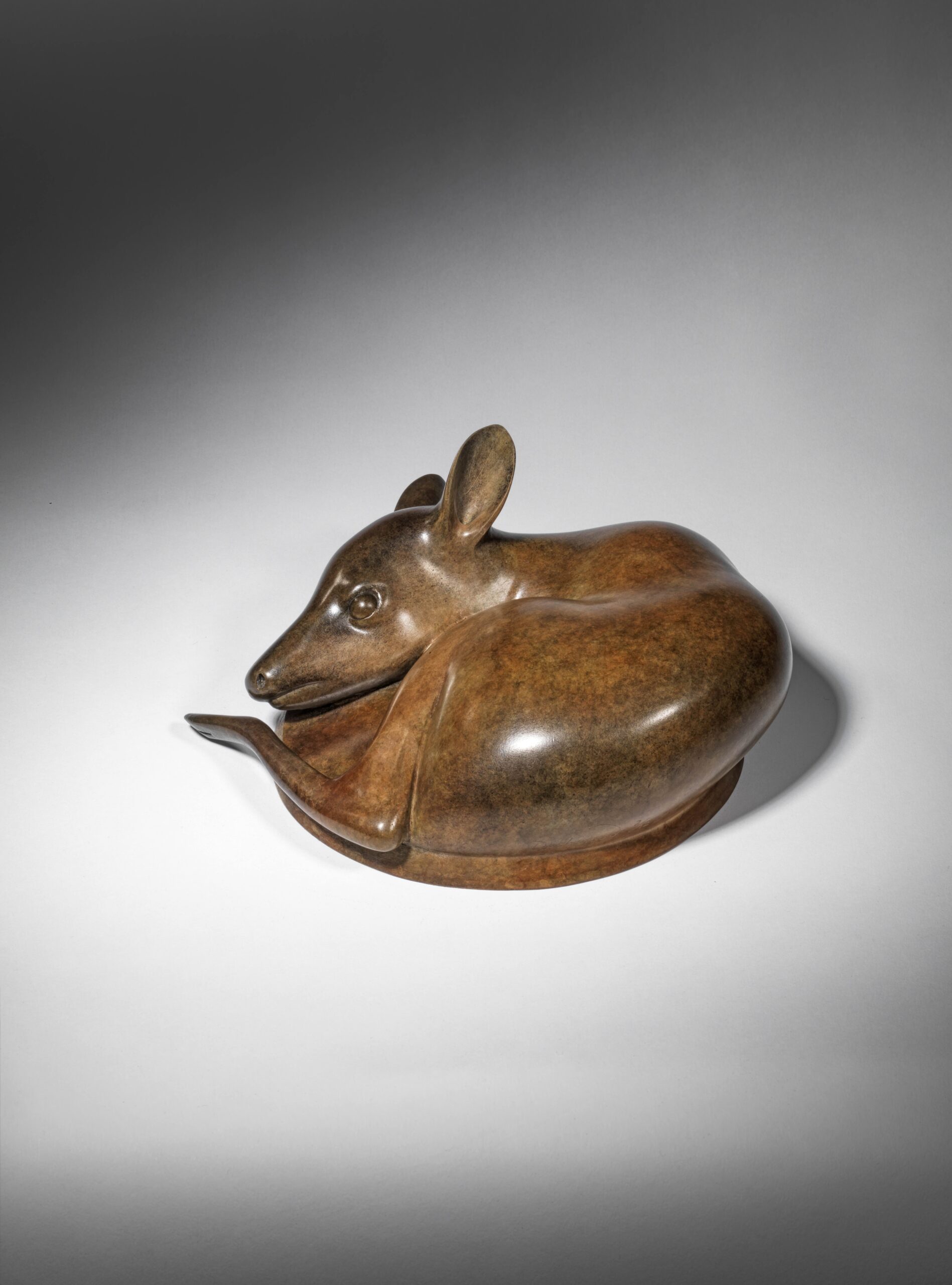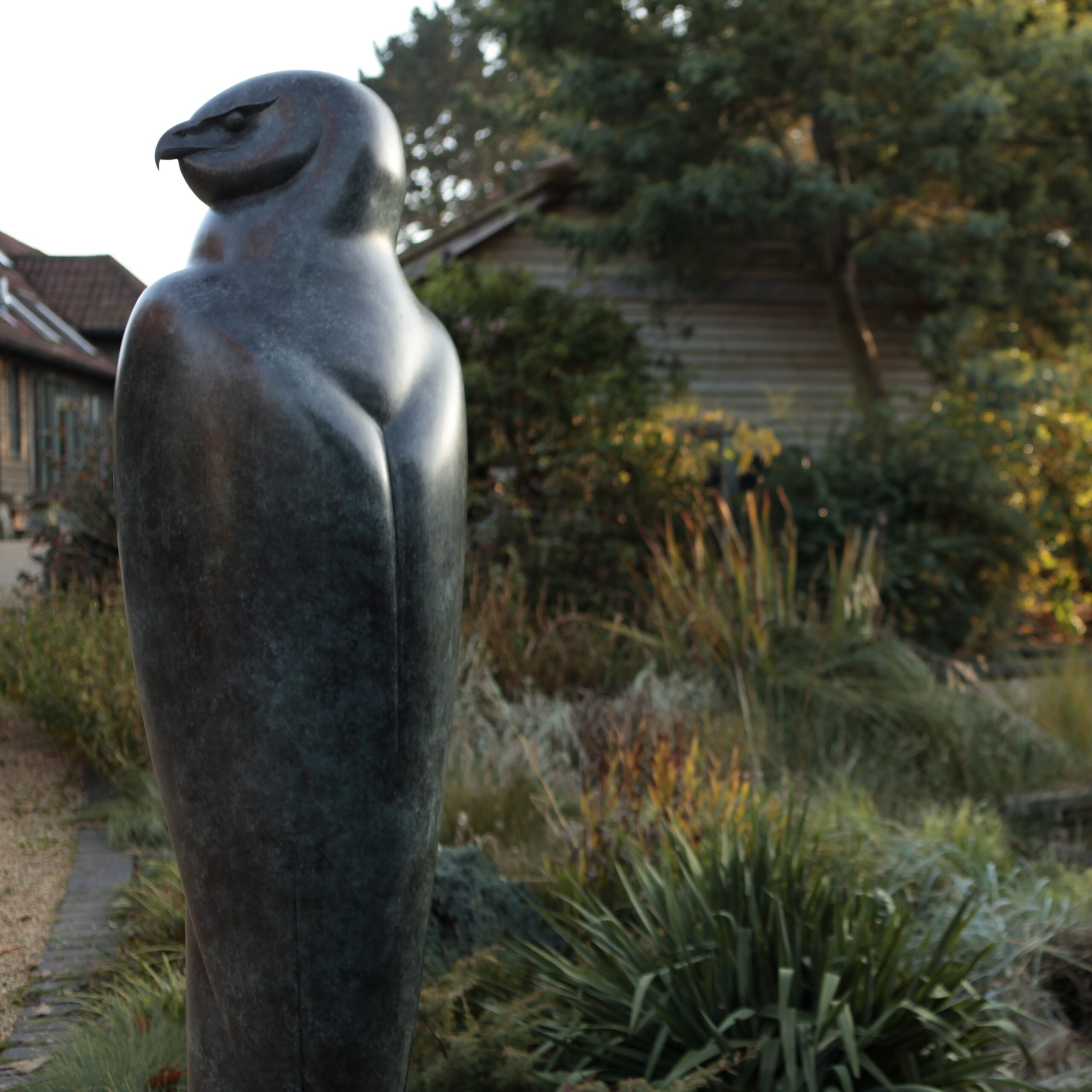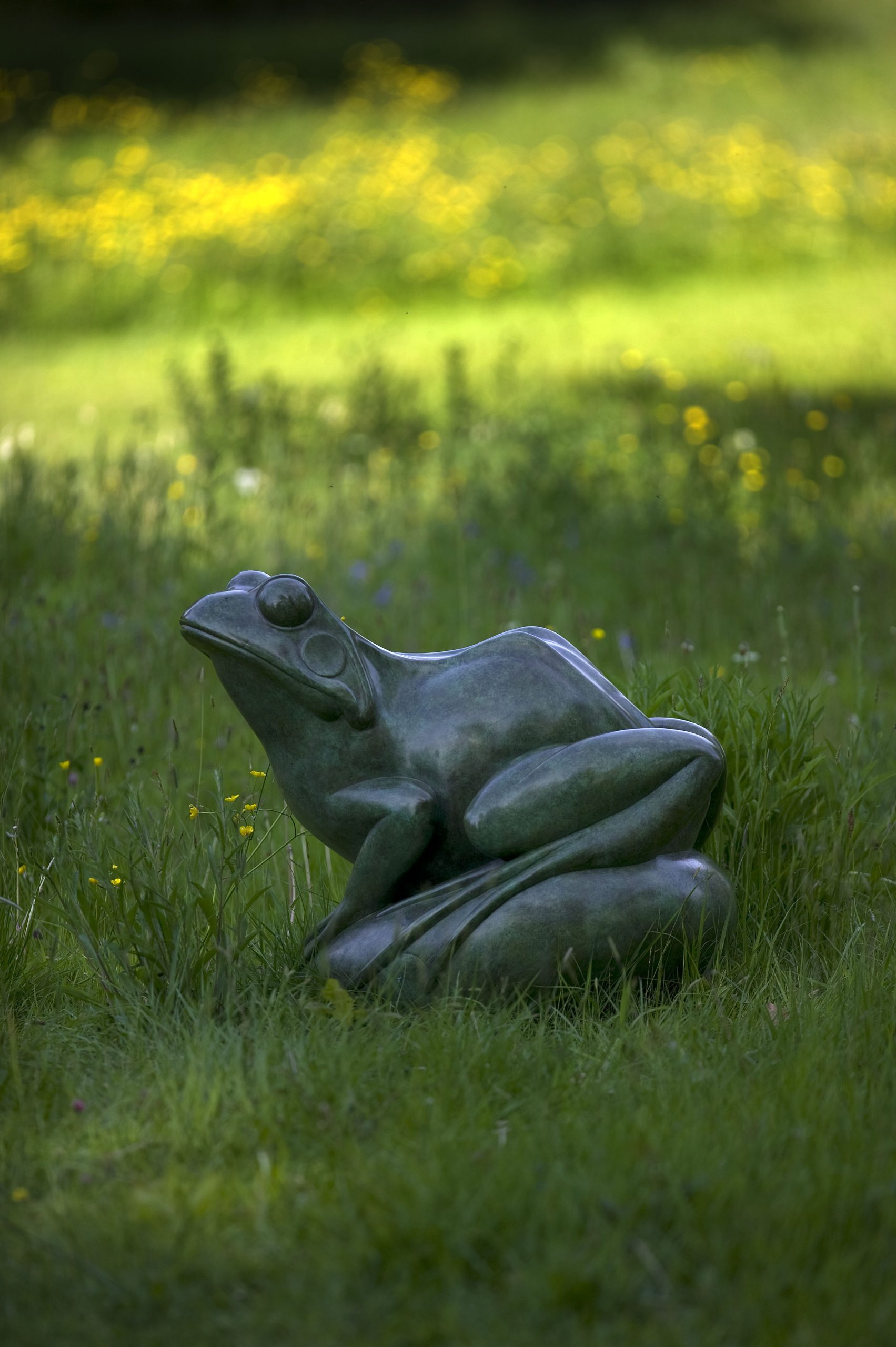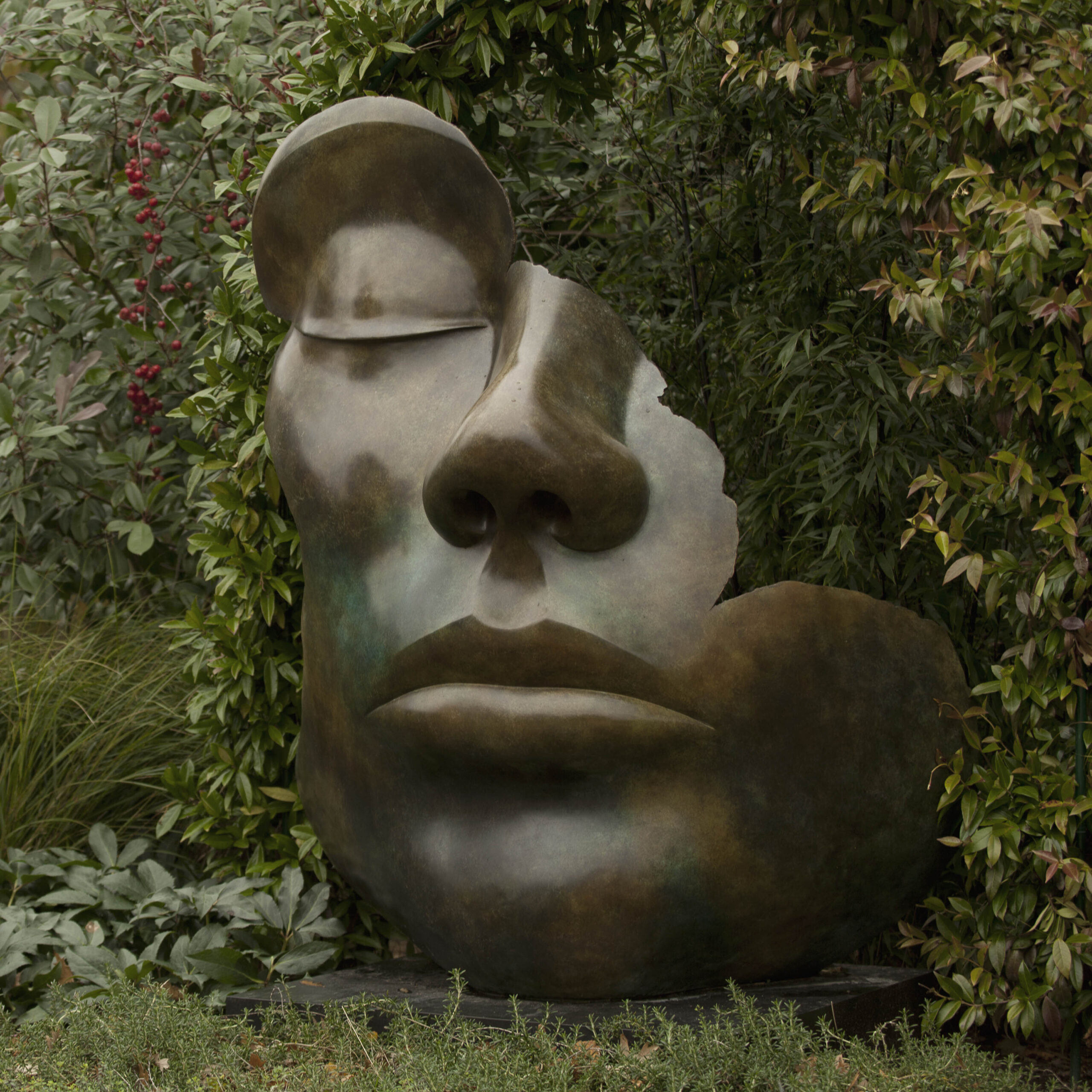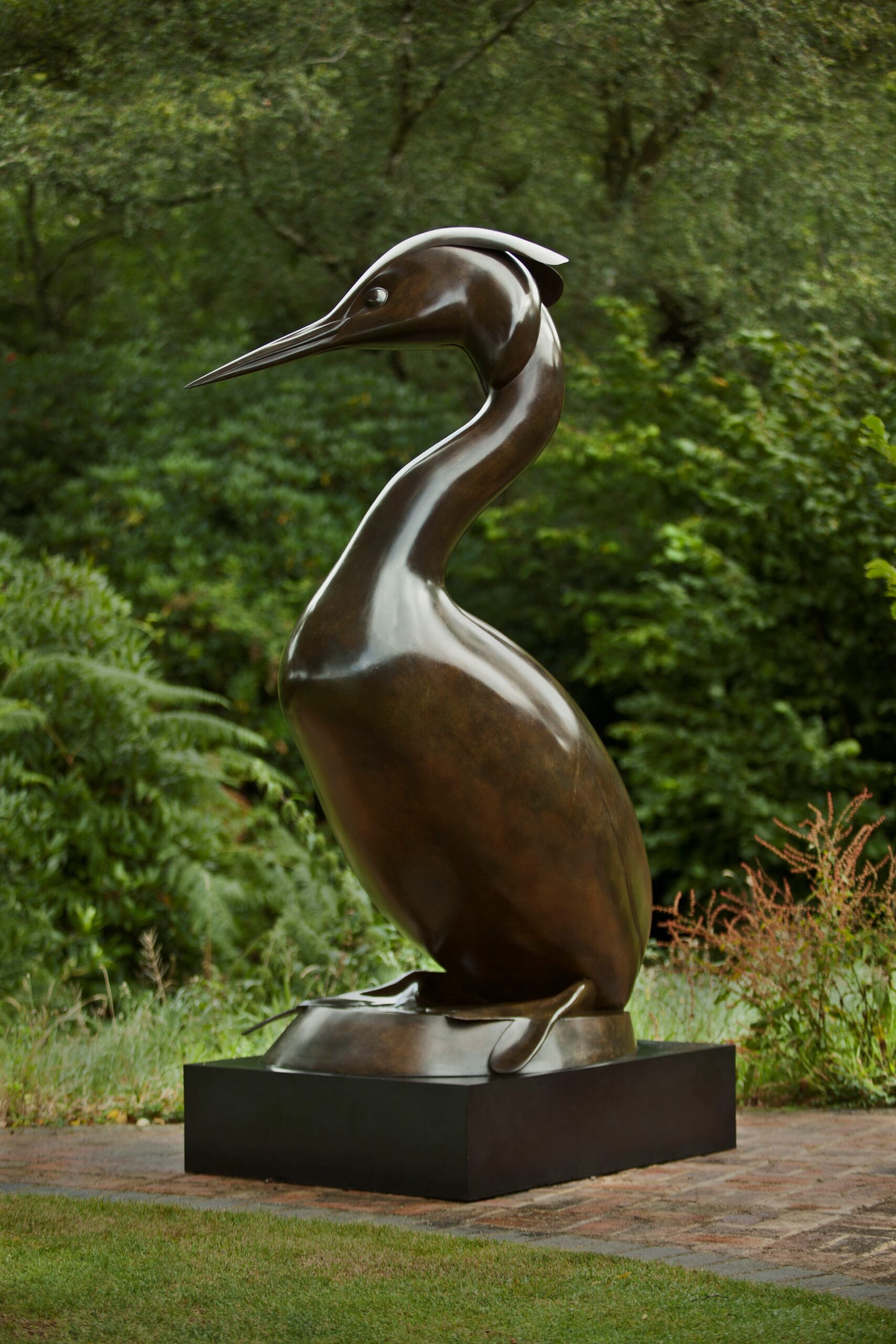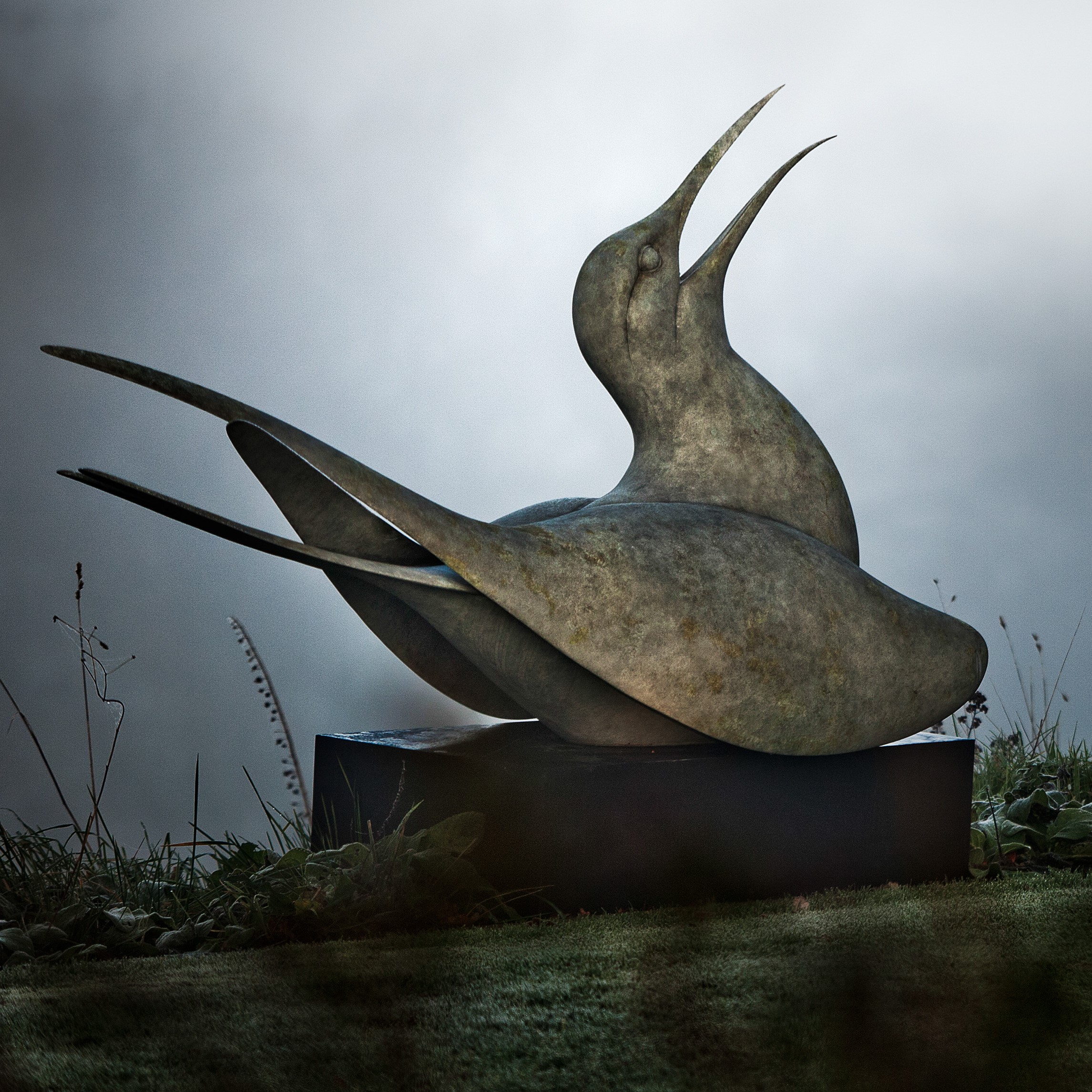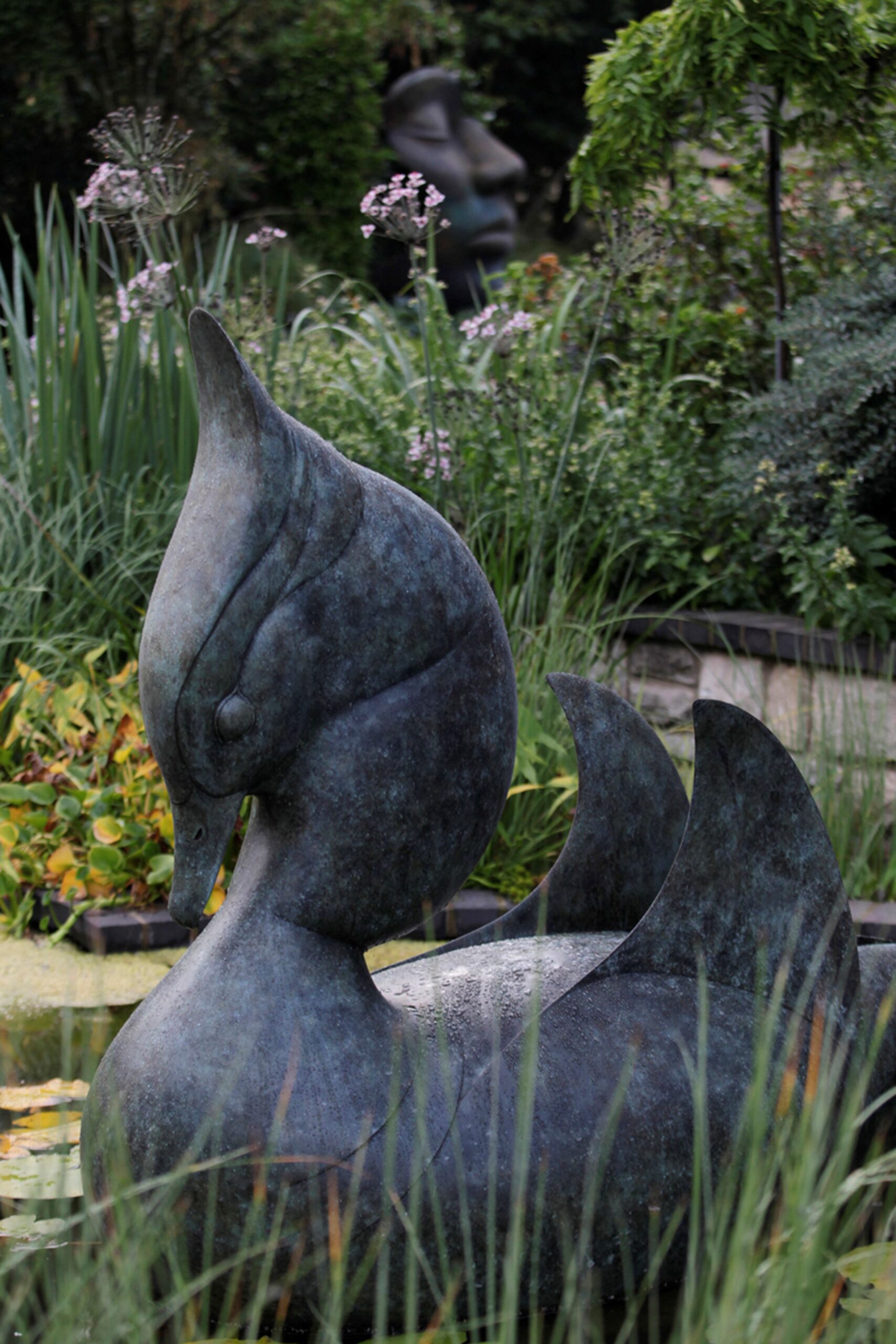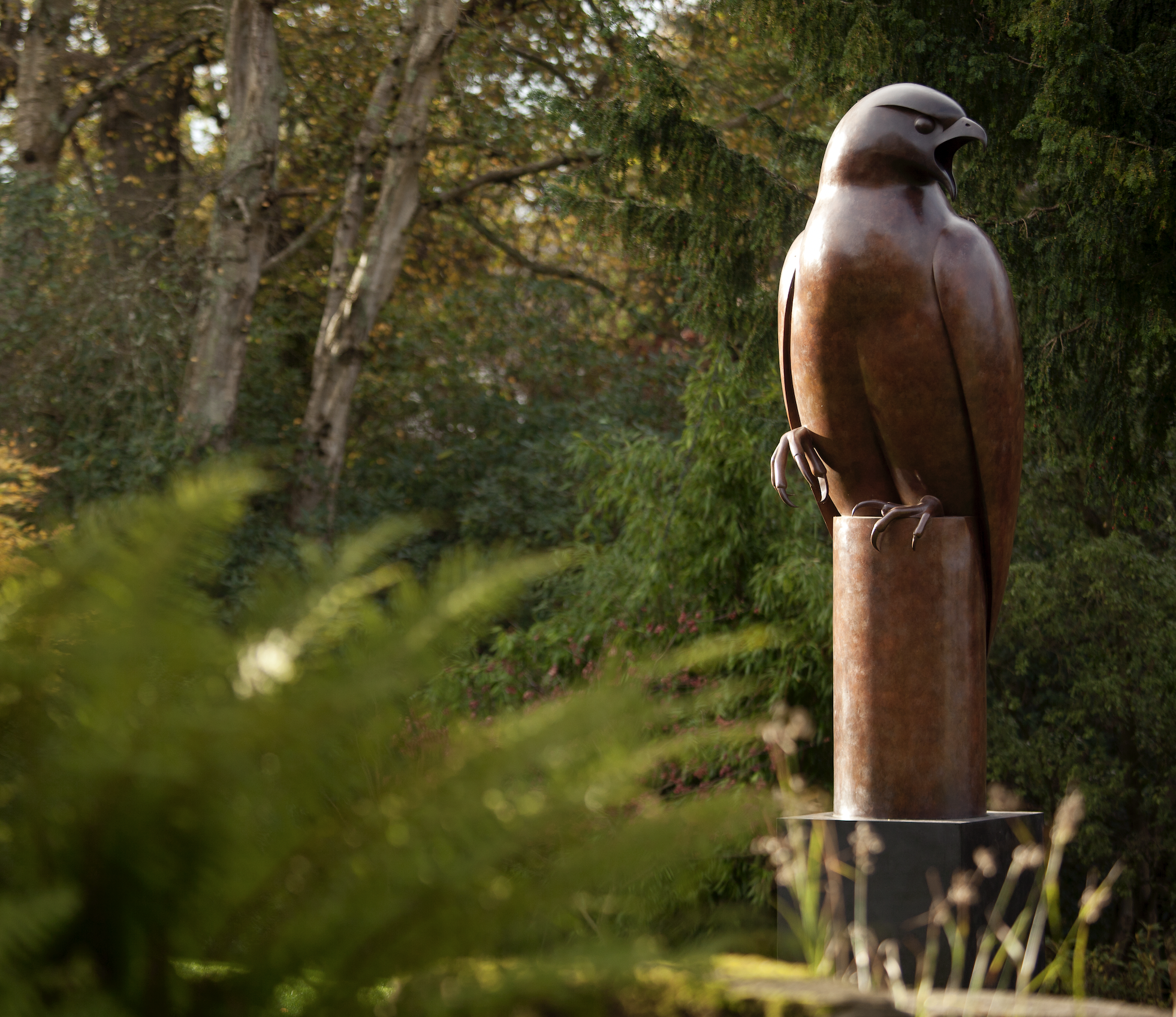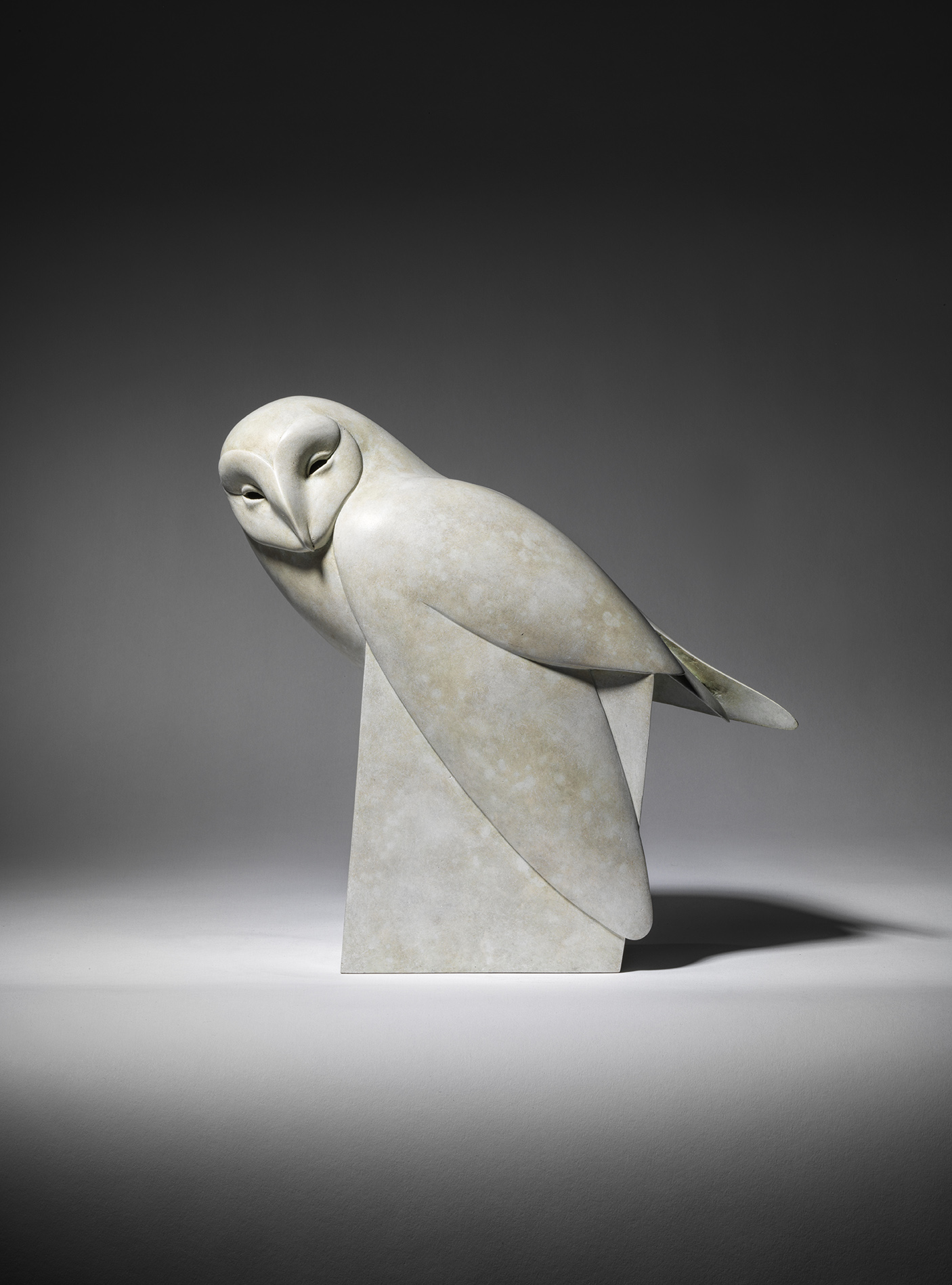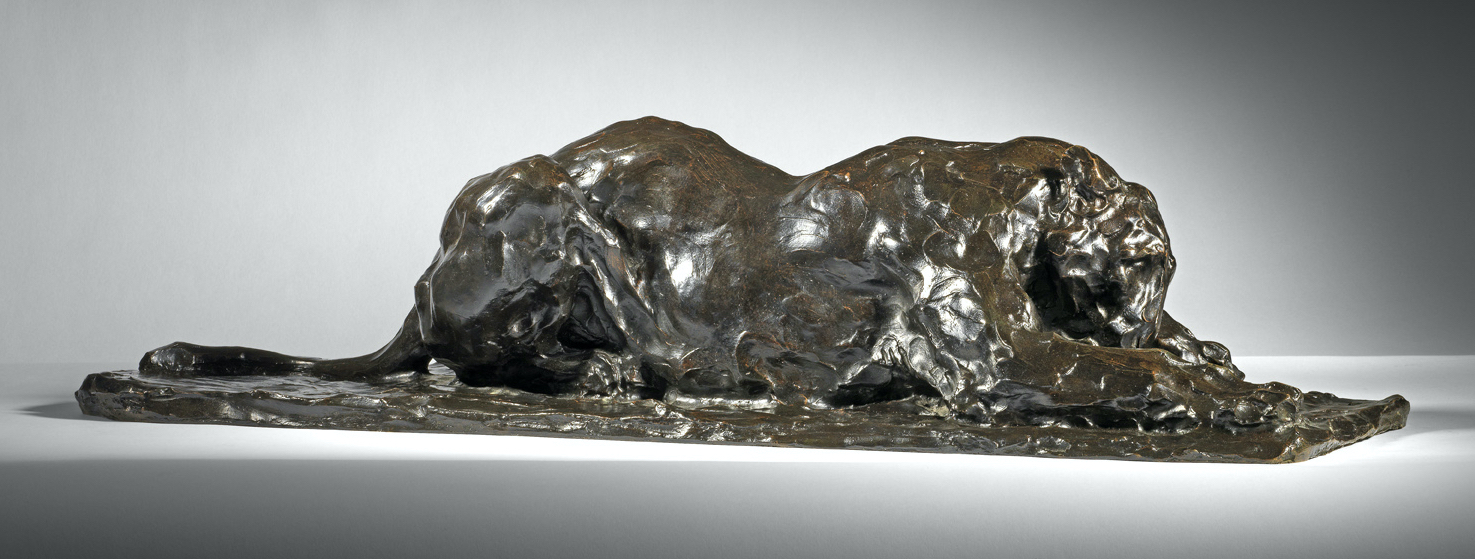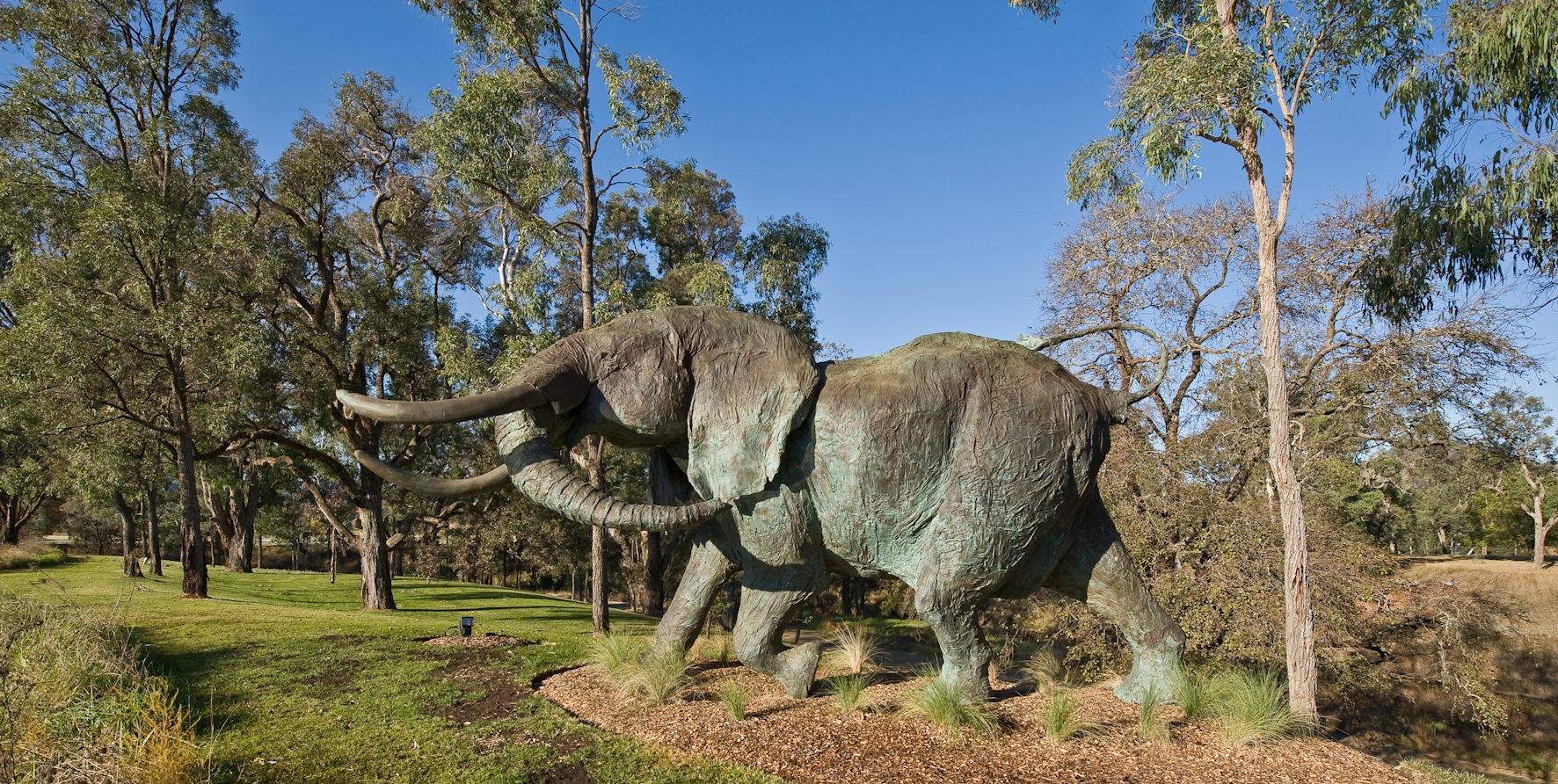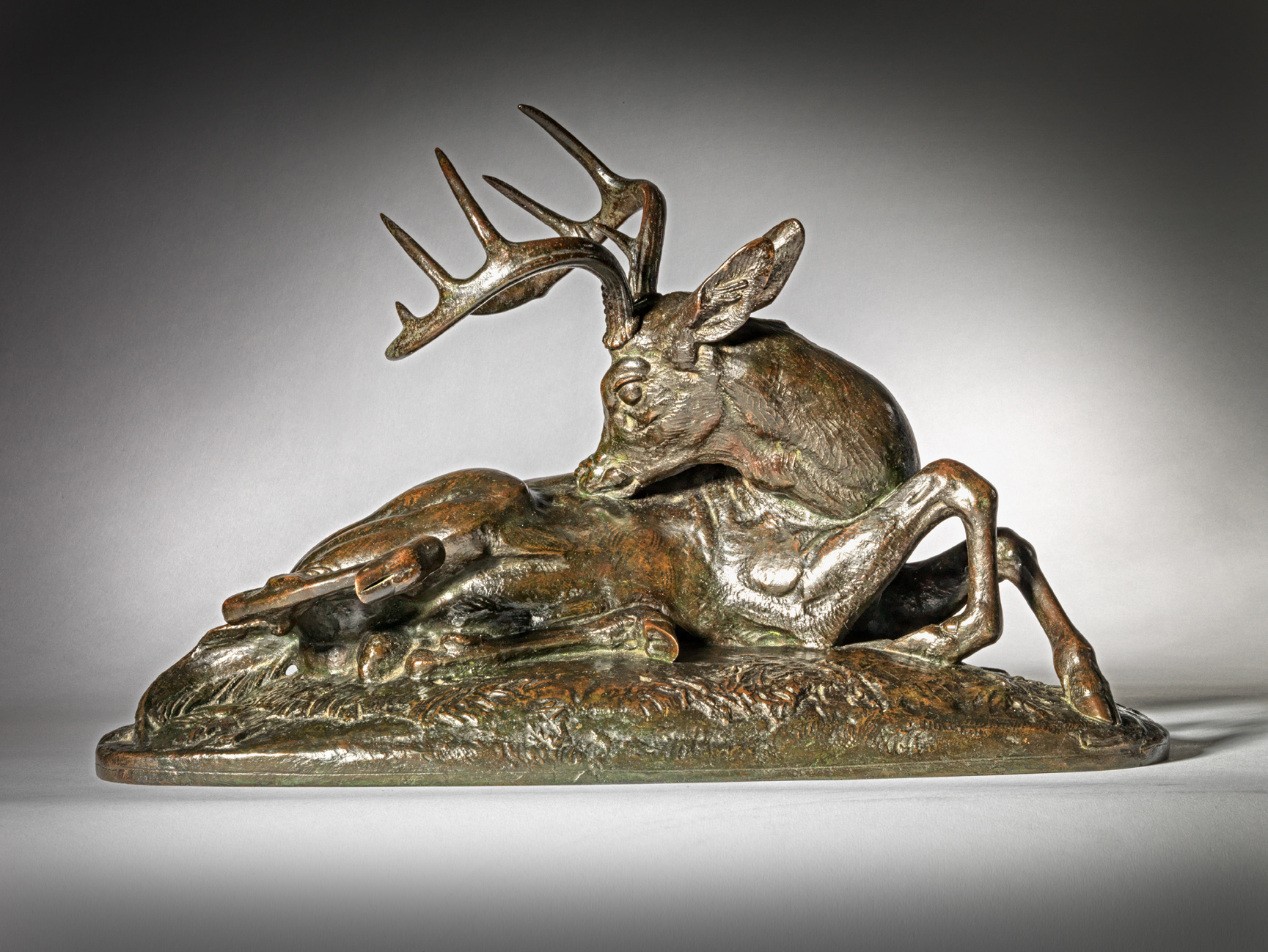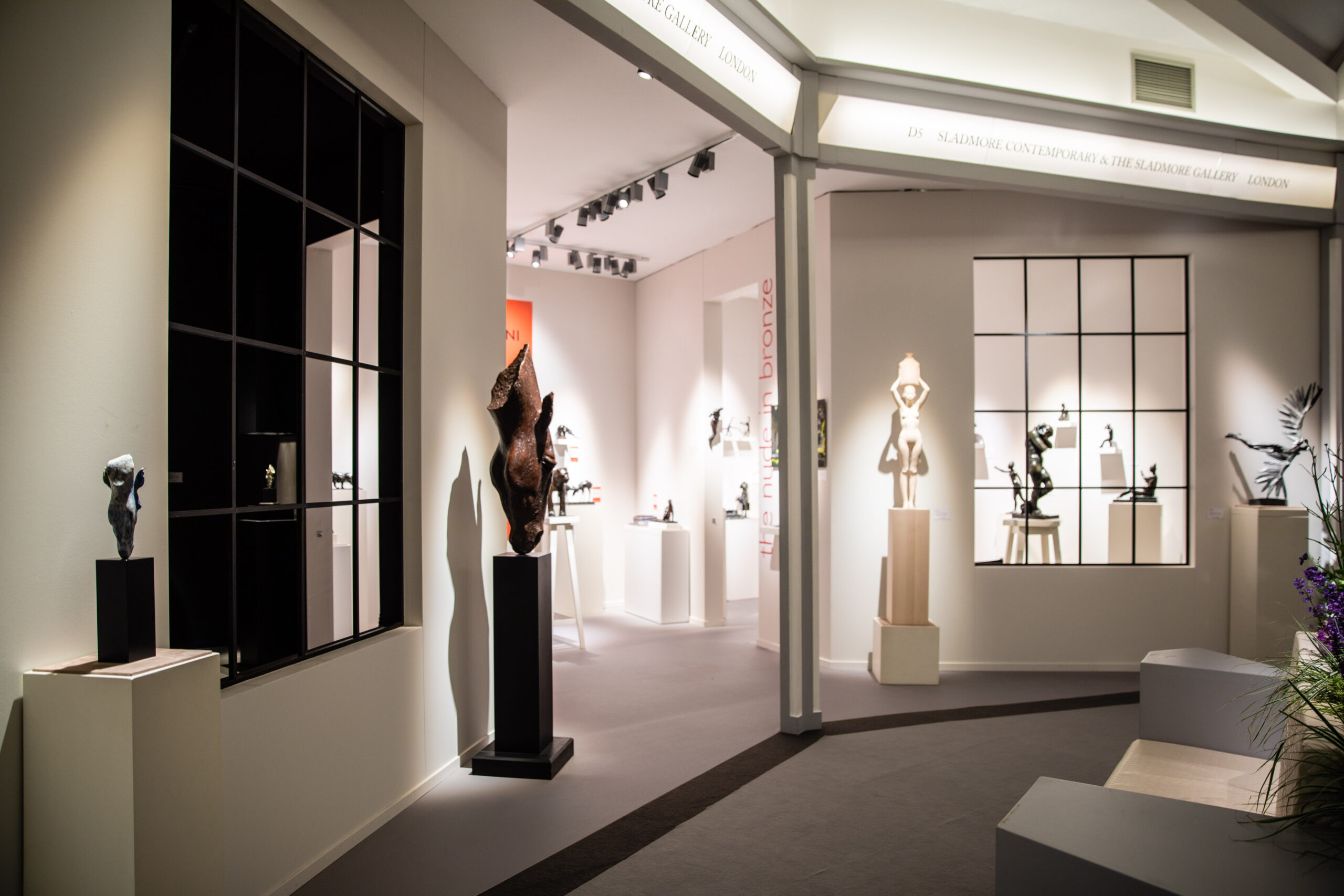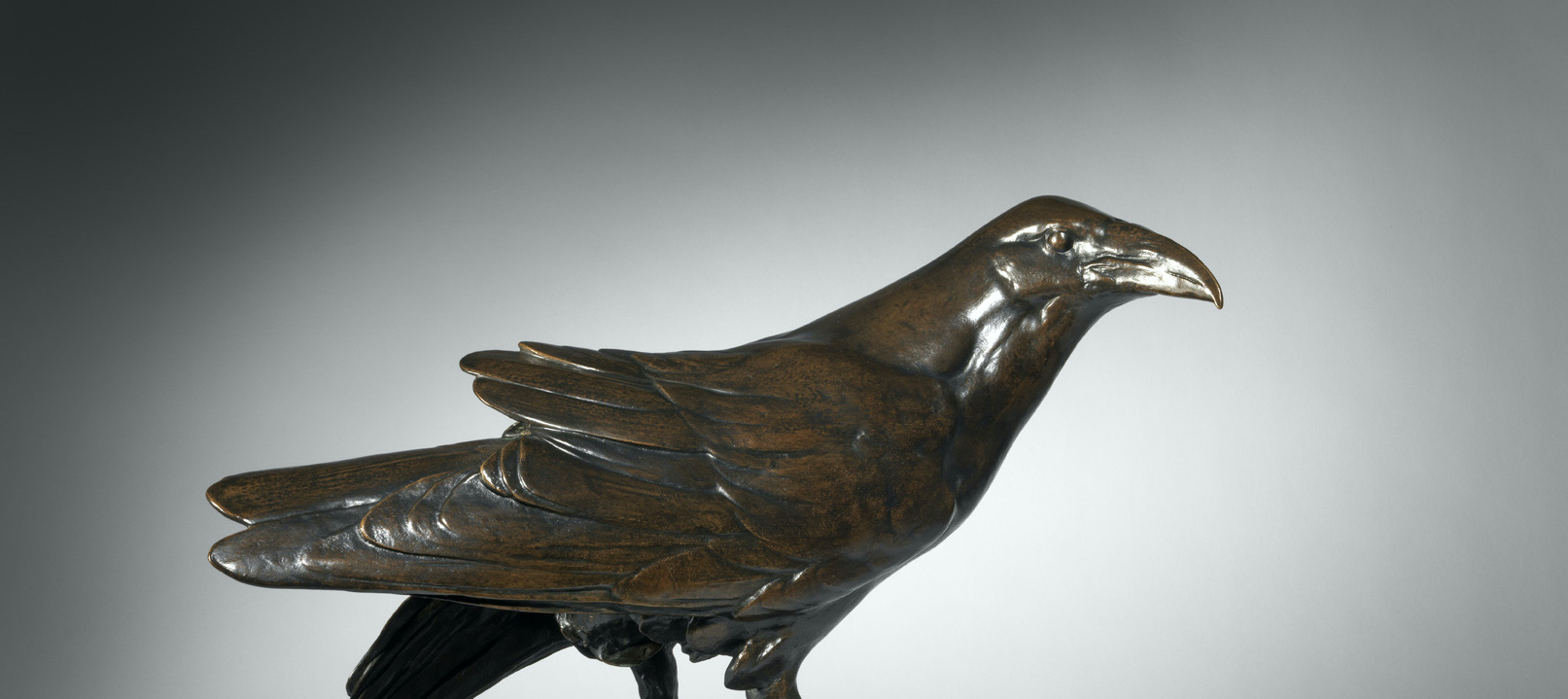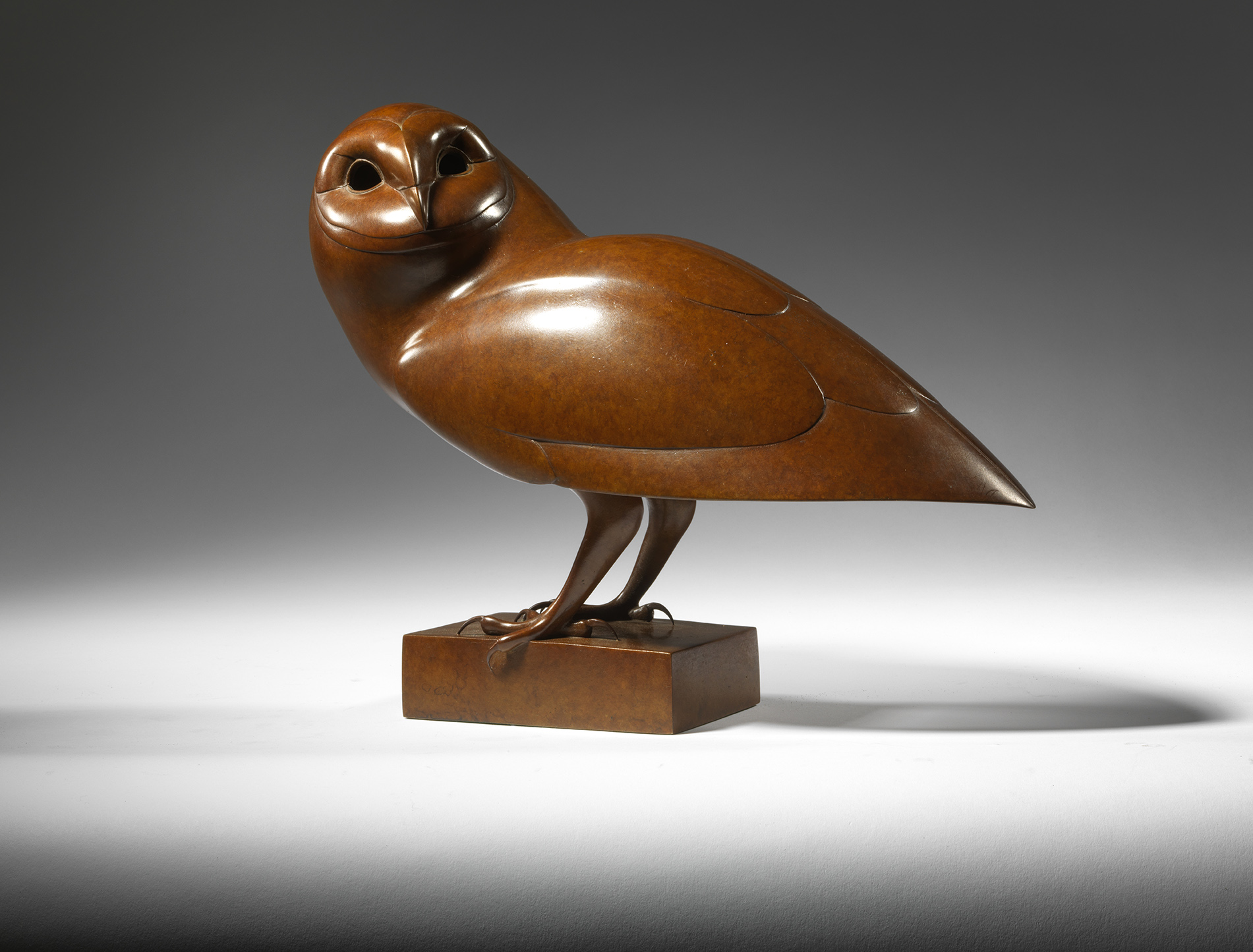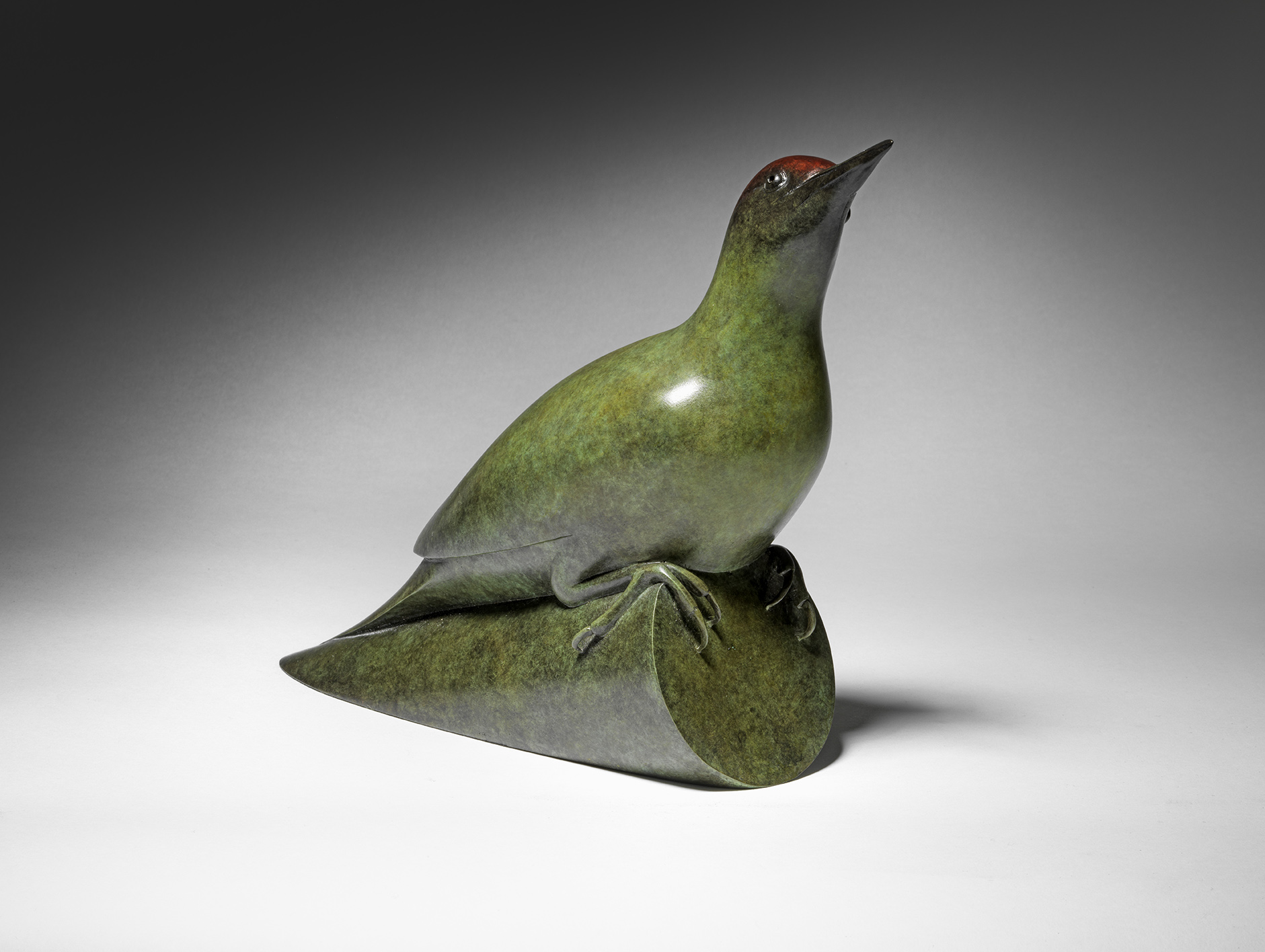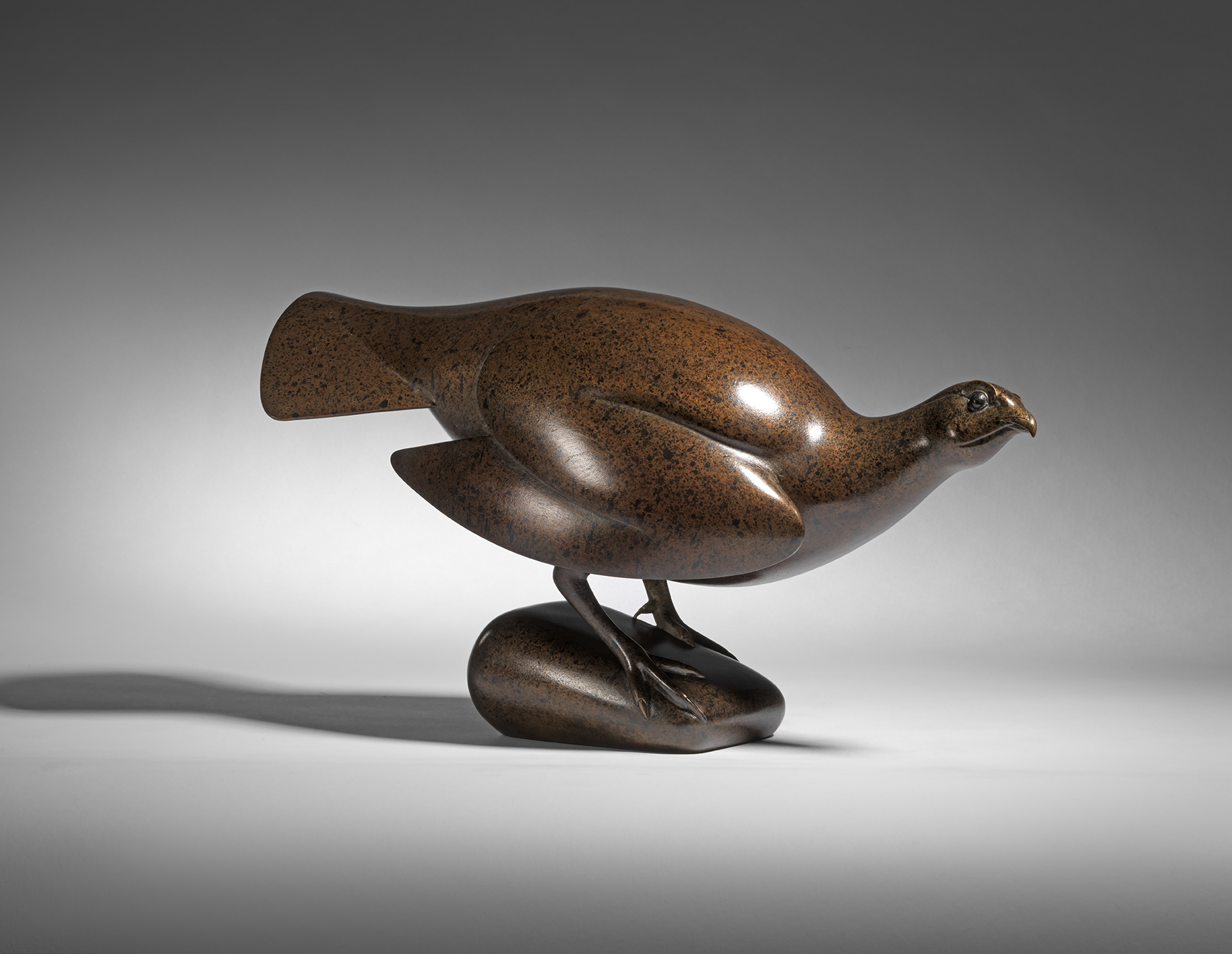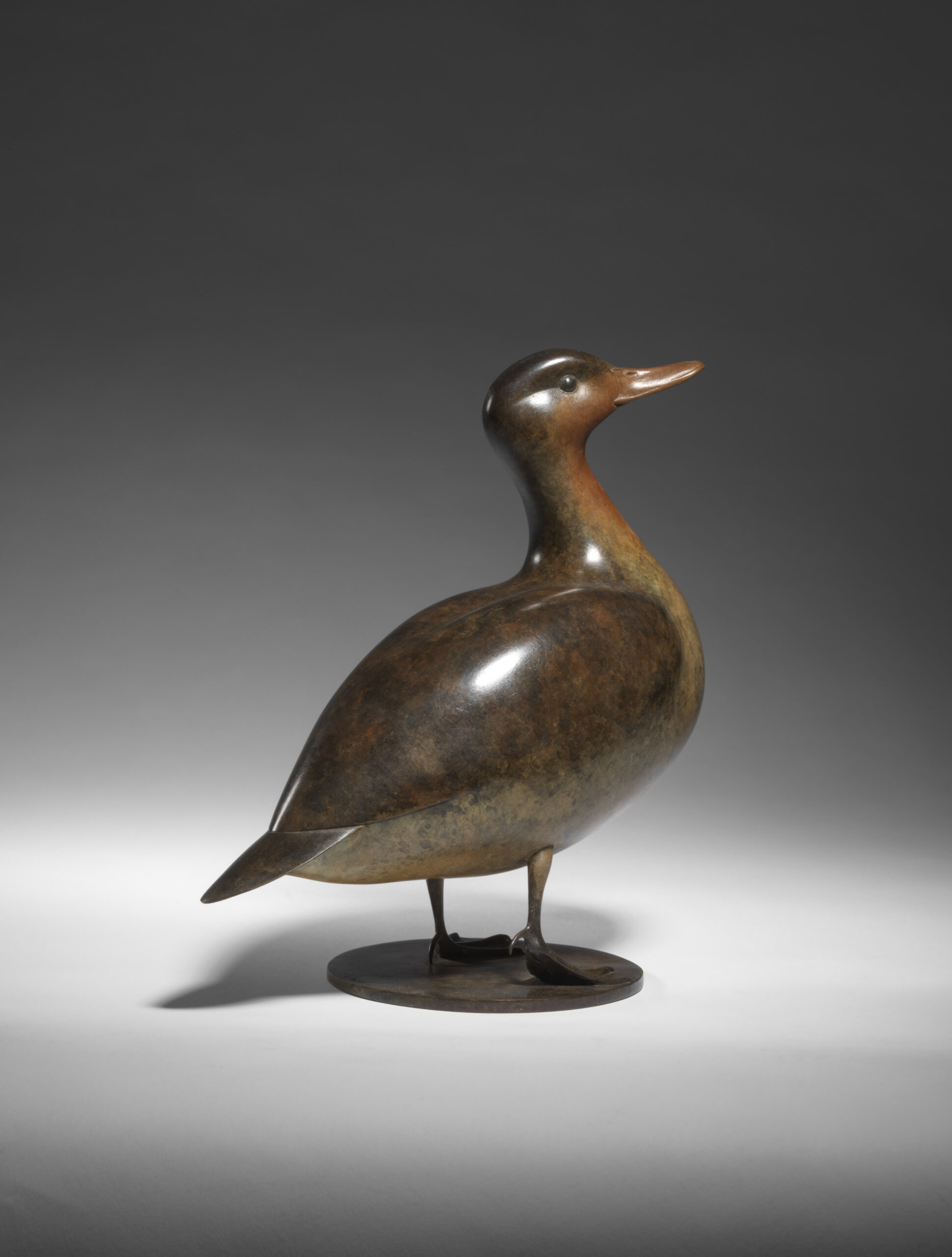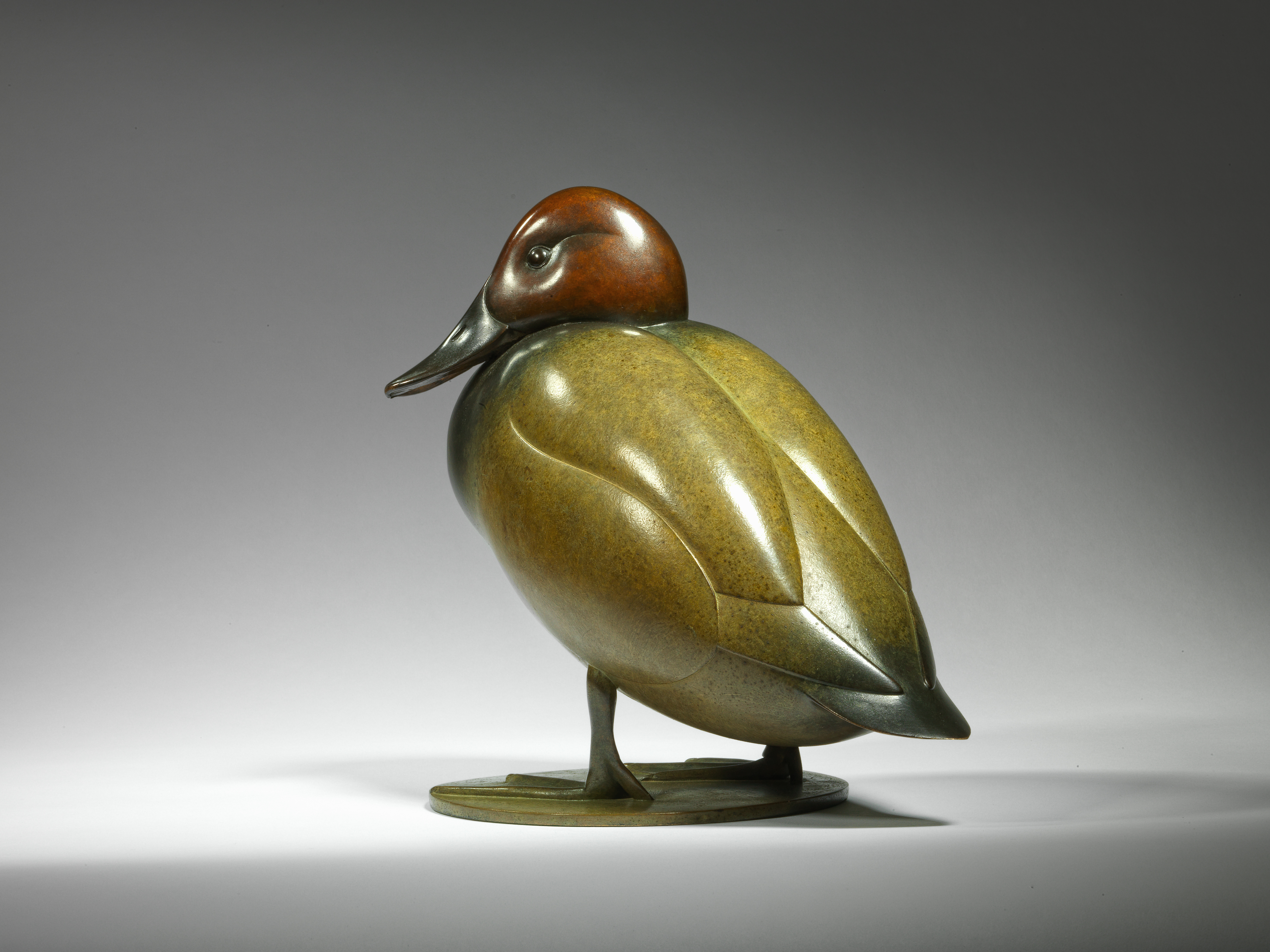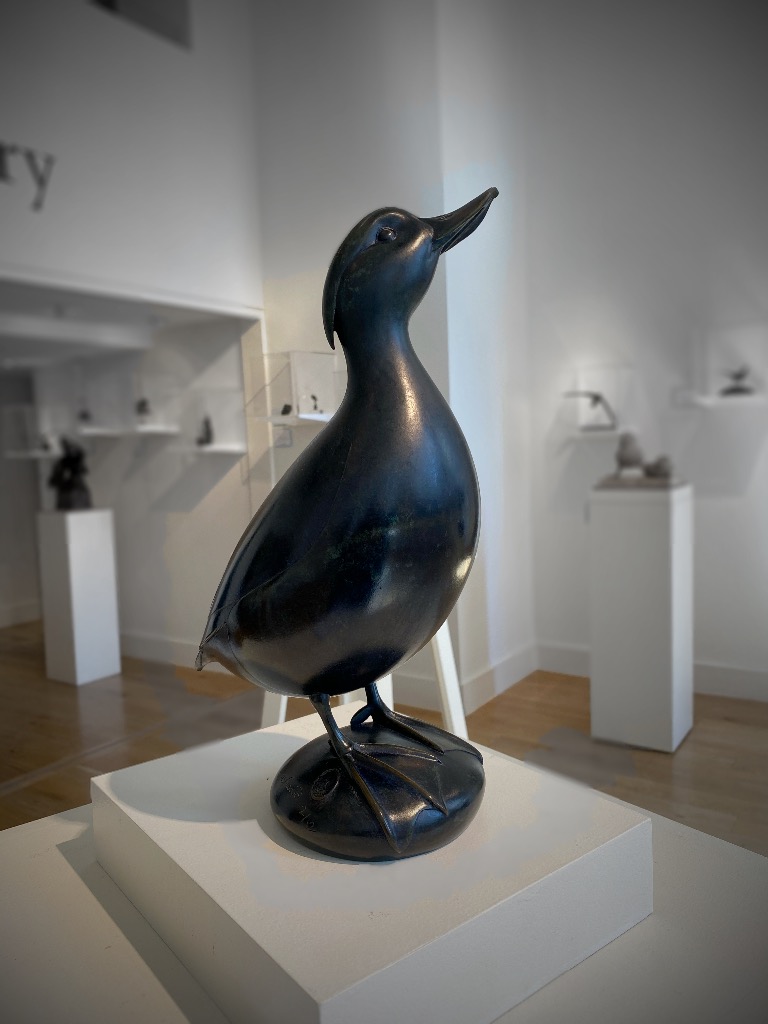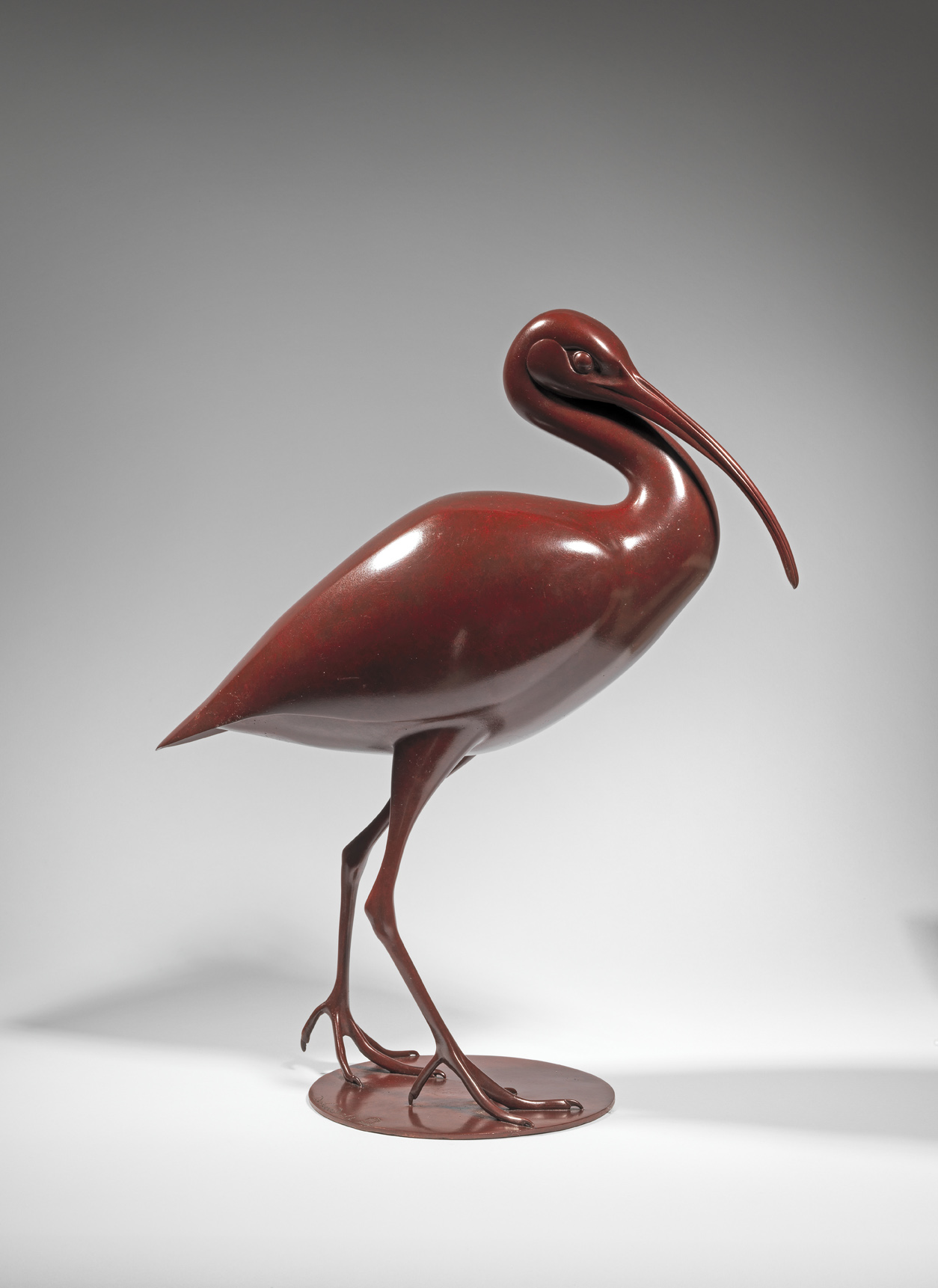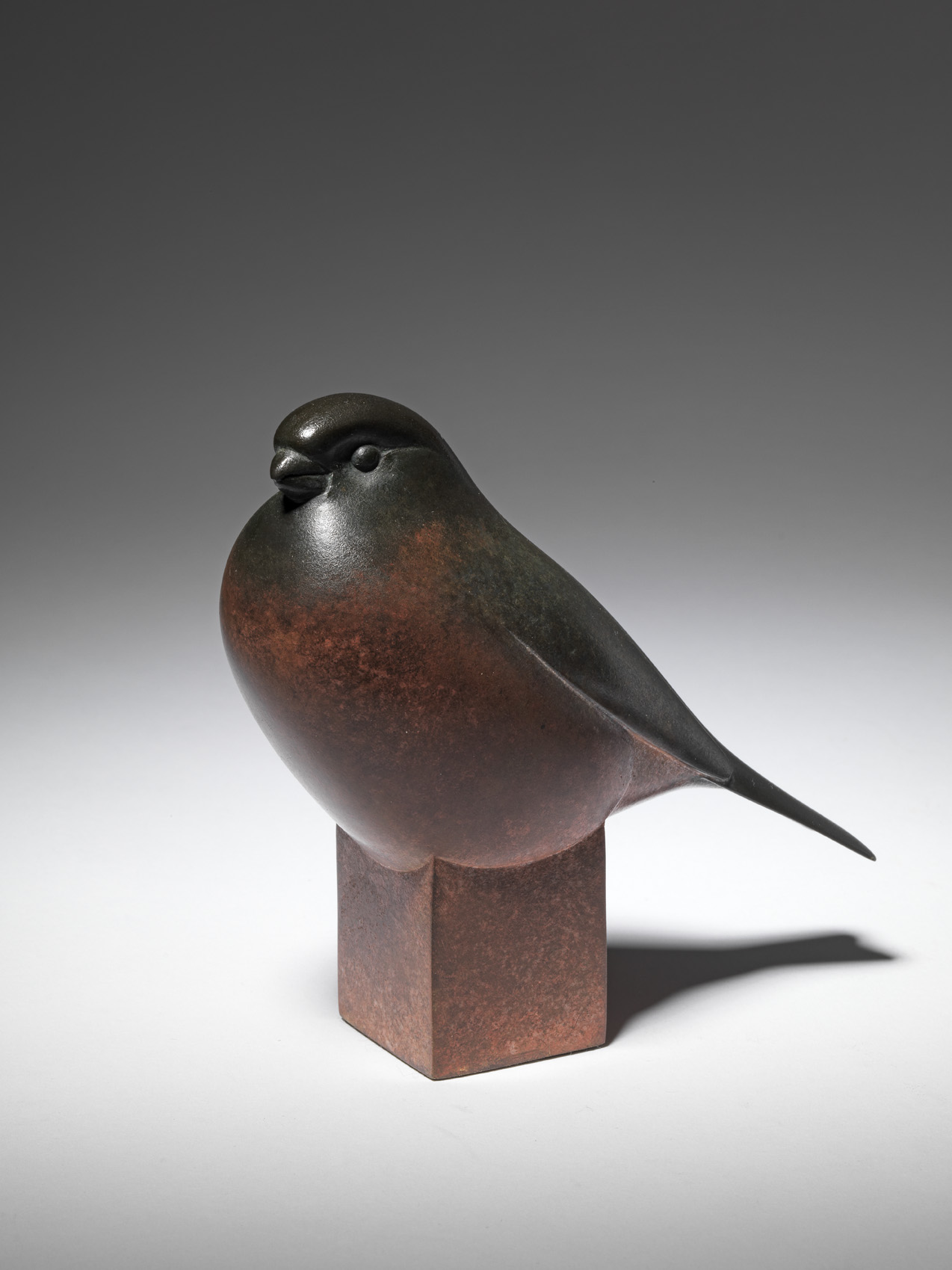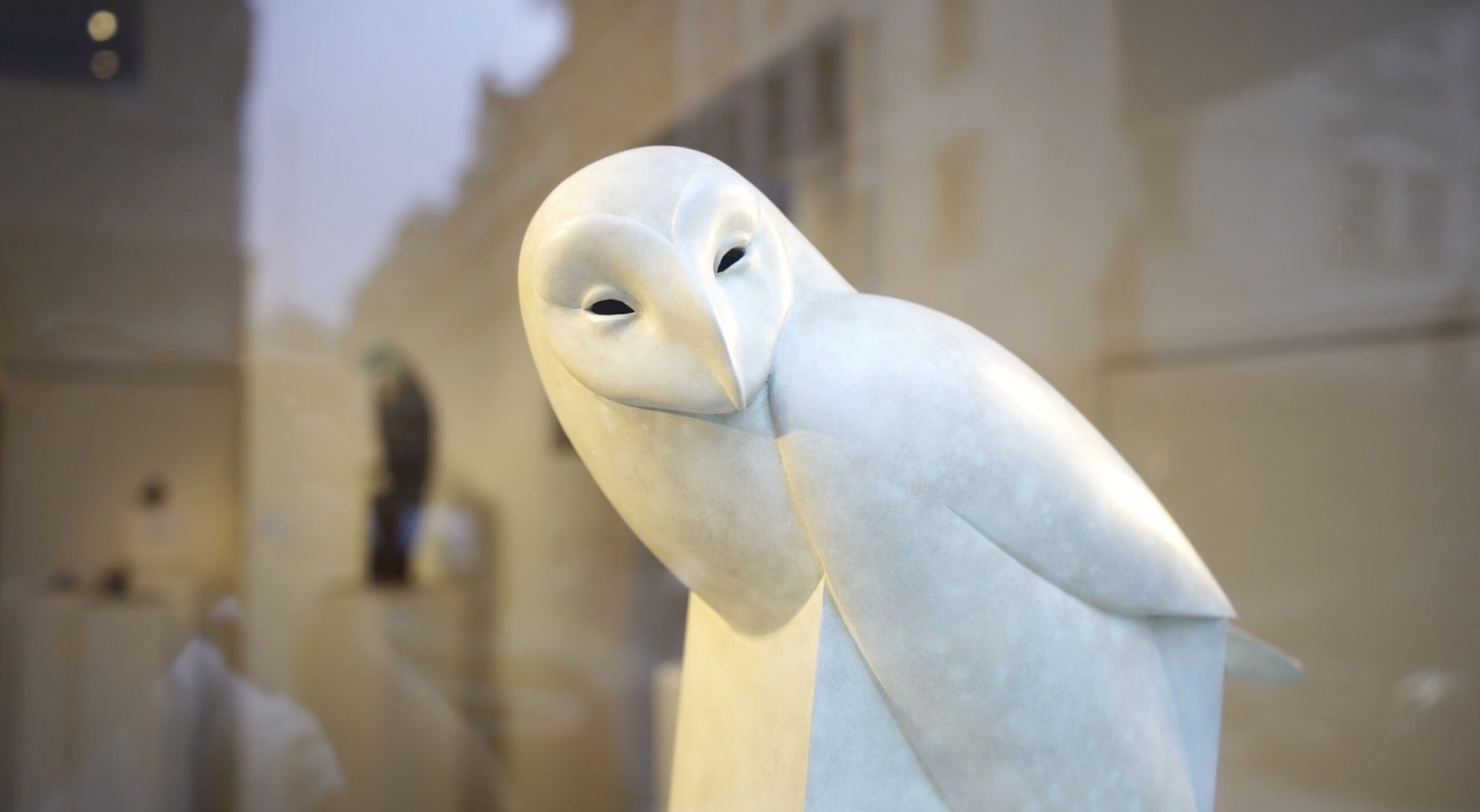
A master sculptor of birds in bronze, Dashwood eliminates all superficial detail to attain refined forms with smooth surfaces, enhanced by the application of multi-coloured patinas.
Although his work can be placed within the genre of wildlife art, Dashwood has transcended the subject matter, and his bronzes are firmly established in the wider field of contemporary art.
“Birds have been my passion since childhood. They, together with my love of the countryside, nature and the many field sports in which I have taken part, have formed the tapestry of my life. Within that tapestry, sculpture has been the major thread.”
Geoffrey Dashwood was born in Hampshire in 1947. At the age of fifteen he won a place on merit to study fine art at Southampton College of Art but preferring an outdoor life and studying directly from nature he left soon afterwards.
For five years he worked for the Forestry Commission as a keeper in the New Forest but after producing the illustrations for a New Forest guide for the Commission, most of his time was soon taken up illustrating for them, the Countryside Committee, Hampshire County Council and for various others. This work gave him the confidence to become a freelance artist and for the following ten years he concentrated on illustrations, drawings, and watercolours.
However, in 1980 Geoffrey discovered a preference for working in three dimensions of sculpture. His first pieces were small, highly detailed, realistic studies echoing his earlier drawings, very much in the mainstream tradition of English wildlife and sporting art and comparable in style to the famous 19th century French animalier school of sculpture. Although commercially successful, Geoffrey became increasingly dissatisfied with the restrictions of devout realism and a lack of personal expression.
Finally, he broke away to create larger, boldly modelled sculptures which, contrastingly, were a very personal interpretation of nature, their form simplified and abstracted with echoes of twentieth-century masters like Pompon and Brancusi. Their individuality was further determined and enhanced by the application of original multi-coloured patinas. The essential character and personality of a species is well established in bronzes which, more importantly, succeed and delight as pure sculptural form. A number of sculptors now work in a similar style, but, in our opinion, none come close to Geoffrey’s work with his innate understanding of each individual subject.
His unusual lifestyle and approach to art was the subject of a half-hour documentary film made by TVS. Over the last twenty years Geoffrey’s sculpture has won many awards, including best sculpture at the Society of Wildlife Artists three years running and also first prize for sculpture at the International Festival De L’Art Animalier, Loire Valley, France. Many of his models have been selected by the Leigh Yawkey Woodson Museum, Wisconsin for exhibition in their annual shows.
His life-size sculpture was the subject of major retrospective exhibition held at the Nature in Art Museum in Gloucestershire, England, the first living artist the museum accorded with such an honour. Dashwood’s life-size and monumental works have been a particular success at the Royal Academy Summer Exhibition. He was given a retrospective exhibition at the Lymington Museum in southern England in 2002. His 2-metre high, monumental sculpture of a Tawny Owl was situated at the main entrance to the Financial Services Authority building in Canary Wharf, London.
Geoffrey’s exhibitions continue to create huge interest with complete editions of bronzes selling out. His exhibitions in New York, Paris, Sydney, Moscow and other international shows and art fairs have helped maintain his reputation as the originator and principal proponent of his particular brand of avian sculpture.
Artworks
View all Artworks >
Avocet
Geoffrey Dashwood
A fine quality, contemporary bronze model of a ‘Avocet’, 2023 by Geoffrey Dashwood, (British, b. 1947). This bronze from an edition of 12, is signed […]


